"Installing solar power can benefit your company in many ways" In today’s environmentally conscious world, businesses are increasingly seeking ways to reduce their carbon footprint and operational costs. One effective solution is installing a commercial solar system. This innovative approach not only aligns with sustainable practices but also offers numerous financial and operational benefits. In this blog, we will explore what a commercial solar system is, its benefits, and how it can be used for industrial or commercial purposes. Additionally, we’ll highlight ten key advantages of adopting this technology. What is a Solar System for Commercial Purpose?A commercial solar system is designed to meet the energy needs of businesses and industrial facilities. Unlike residential solar systems, which cater to individual homes, commercial solar systems are larger and can generate more power. They typically include solar panels, inverters, and mounting systems installed on rooftops or ground-mounted arrays to convert sunlight into electricity. This electricity can then be used to power various business operations, reducing dependence on traditional energy sources. What are the Benefits of a Solar System?The benefits of a solar system, particularly a commercial solar system, are numerous: 1. Cost Savings: One of the most significant advantages is the reduction in electricity bills. By generating your own power, you can drastically cut down on energy costs. 2. Environmental Impact: Solar energy is a clean and renewable source, helping businesses reduce their carbon footprint and contribute to a sustainable future. 3. Energy Independence: With a commercial solar system, businesses can become less reliant on the grid and protect themselves against fluctuating energy prices. 4. Increased Property Value: Installing solar panels can increase the value of your commercial property. 5. Tax Benefits and Incentives: Many governments offer tax credits, rebates, and incentives for businesses that install solar systems, further reducing the overall cost. "Make use of unused space to add value to your company." What is the Commercial Use of Solar Power?Solar power can be used in a variety of ways for commercial purposes:
"Adding solar to your farm will reduce energy bills." How is Solar Energy Used for Industrial or Commercial Purposes?Solar energy is utilized in industrial and commercial settings through:
10 Key Advantages of Commercial Solar Systems
ConclusionIn conclusion, installing a commercial solar system offers a plethora of benefits, from cost savings to environmental impact and beyond. By harnessing the power of the sun, businesses can not only enhance their operational efficiency but also contribute to a sustainable future. If you’re looking to make a positive change for your business and the environment, a commercial solar system is an excellent investment. The Benefits of Green Building - Environmentally Sustainable Buildings AuthorArticle supplied by Mark Wilson for commercial solar, energy upgrades and solar battery storage This article is a guest post and the owners of this website take no responsibility for the content or it's originality. The website publishes this article in good faith with the undertaking from the author and supplier that the content has not been plagiarised. Please report any errors in the article to the website owners. Should you prove the content is not original the article will be immediately taken down. Do you want to learn how to manage construction projects successfully?Paul Netscher has written several easy-to-read books for owners, contractors, construction managers, construction supervisors and foremen. They cover all aspects of construction management and are filled with tips and insights. Visit to read more. The books are available in paper and ebook from most online stores including Amazon. Note: We welcome genuine comments, especially comments that add additional information to the subject matter in the article. We however reserve the right to remove inappropriate comments, which includes comments that have nothing to do with the subject, comments that include inappropriate language, and comments that are an advertisement for a product or company, or which include an advertising link. We will not enter into discussion on why a particular comment was removed.
0 Comments
"All this material will be carted to the waste dump at great cost including cartage and dump fees. Good timber and other building material trashed - what a waste!" Construction work creates a considerable amount of waste. From clearing the site to the final finishing of the building, waste is generated through every phase of construction. If the waste is not adequately managed, it may create a big problem for the entire environment, including human health, as well as resulting in large costs to dispose of the waste. Proper and efficient waste management is as essential as the construction itself. The green and sustainable construction industry also urges production waste to be as low as possible. Reducing, Recycling, and reusing the waste can help efficiently manage and reduce construction waste. Sometimes, construction waste is unethically disposed of in the water streams without concern for human health. In contrast, the construction waste generated in the U.S. is meant to be disposed of in landfills planned and controlled by the Code of Federal Regulations (CFR) 40 with the labels D and C. There are several ways to properly manage the construction waste generated by the development process or after the demolition. This article discusses a correct way of waste management that might help you in your next construction project. Reduce Construction WasteWhen working on a construction project, reducing waste material may help you in on-time and proper management. Increase profits - reduce material wastage on construction projects Some Recyclable and reusable alternative materials used in construction may also help reduce waste. Recyclable materials are then reused in the construction of the new building will also reduce waste and save natural resources. The selection of modular metal forms in concrete construction might be helpful in many ways. It allows the building to be demolished quickly and reuse the material in other projects. Similarly, the wood waste generated by the framework made of plywood and lumber can be reduced. On the other hand, the latest construction methods can help in preventing construction material waste. The reduction of waste dramatically helps in reducing the harmful impact on human and environmental health. "Ordering the most suitable lengths can limit the offcuts and waste of construction materials. Remember the contractor pays for material that is not used., plus the costs to dump it" Reusing Construction MaterialsConstruction and demolition of the building and infrastructure are very common processes. After the demolition of the building, the debris is usually thrown away. But if the recyclable material is used in the construction, that can be reused in other construction. In contrast, proper removal of doors, windows, and other accessories can be resale and reused in other construction. Many alternative materials can be used in place of conventional ones. These alternative materials are reusable. If the building is constructed with these materials, the debris will be reused in other construction after demolition. In contrast, non-reusable waste is reused in landfills. "Some salvaged items can be reused or sold. Even giving some stuff for free will save you the cost of disposing of the items, and it's good for the environment." Recycling of Construction WasteWhen the construction waste is converted into debris, it can sometimes be recycled. For example, rubble and concrete are recycled to make aggregates. The common methods of Recycling are: Site-separated: The systematic management of the waste on the site is necessary. Try to separate the waste by type on-site and deal with it hand-to-hand. It is a super helpful method to manage the more considerable waste on-site, even in less time. However, the method needs little extra space and active supervision. Mixed Recycling: This method does not need to separate the waste by type. Instead, you can use a single container and mix all the waste. This method is helpful if there is little space on-site. Hybrid Recycling: this is the combination of the two methods mentioned above. It is the most recommended one if you can manage the site extra efficiently. Choosing the suitable method of waste management on site depends on the resources, timeline, and amount of waste. Before starting the demolition or construction on-site, develop a waste management plan considering all the factors. Construction Debris Waste or Sustainable Commodity? Of course, all this won't work unless your employees and subcontractors understand how the project's recycling system works, and they also understand that recycling reduces waste that goes to the dump which will reduce costs and benefit the environment. Good signage at the waste collection points is important. What’s expected of your subcontractors? Do they know? "No attempt to sort and recycle on this construction project! It's going to cost lots of money to take it to the dump." Simple Steps to Help the Environment and Improve ProfitsConstruction waste generation is a big problem in the industry, whereas the proper management of waste is a little challenging. Construction waste comes from the demolition and development process and even from heavy equipment like construction cranes for sale. The waste is usually disposed of in water streams, which is unethical and creates many problems for humans and the environment. However, there are some alternative methods to reduce the burden of construction waste. Three basic approaches, such as reducing, reusing, and recycling the waste, can help greatly in minimizing the waste. The article has some basic guidelines for managing construction waste. The economic benefits of being environmentally friendly AuthorIf you are looking for quality used construction equipment to better manage your construction project, visit us at MY- Equipment. We are a Houston-based used equipment dealership that stocks heavy machinery from the leading brands. This article is a guest post and the owners of this website take no responsibility for the content or it's originality. The website publishes this article in good faith with the undertaking from the author and supplier that the content has not been plagiarised. Please report any errors in the article to the website owners. Should you prove the content is not original the article will be immediately taken down. Do you want to learn how to manage construction projects successfully?"This book helps with practical tips learned from real experiences. A must read book for the people who are involved in construction projects, especially project managers." Paul Netscher has written several easy-to-read books for owners, contractors, construction managers, construction supervisors and foremen. They cover all aspects of construction management and are filled with tips and insights. Visit to read more. The books are available in paper and ebook from most online stores including Amazon. Note: We welcome genuine comments, especially comments that add additional information to the subject matter in the article. We however reserve the right to remove inappropriate comments, which includes comments that have nothing to do with the subject, comments that include inappropriate language, and comments that are an advertisement for a product or company, or which include an advertising link. We will not enter into discussion on why a particular comment was removed.
"Poor storage of construction materials can result in the materials being damaged or stolen." Ensuring the safety and integrity of the construction materials needed to complete a build is a huge priority. After all, securely storing construction materials is a logistical necessity and crucial to project success! From safeguarding against theft to protecting against environmental factors, not properly protecting your construction materials can significantly impact project timelines, quality and budgets! Assessing storage needsAssessing storage needs is the first step in securely storing construction materials. It involves carefully evaluating the types and quantities of items to be put away, considering factors like holding duration and environmental conditions. For instance, perishable materials like cement require different holding conditions than durable materials like steel beams. Are your construction materials compliant? Understanding these needs can help you determine the appropriate solutions and minimize risks such as damage or theft. Likewise, assessing your holding needs helps optimize space utilization and ensures efficient requisite management throughout the project. "A disorganised storage area is dangerous, materials could be damaged, and finding materials is difficult and wastes time." Choosing the right storage locationAnother necessity for correctly storing materials is selecting the right holding location. Opting for secure, well-lit areas with limited access points ensures better protection against theft and vandalism. Consider the proximity to the construction site to enhance convenience and efficiency in transportation. For example, choosing a location closer to the project site reduces the time and costs of frequent requisite retrieval. In the end, a strategically chosen location can also minimize the risks of damage from environmental factors such as weather or temperature fluctuations. Construction project logistics - the hidden bottleneck that could be strangling production "Before starting your project plan where your offices and storage areas will be located. Ensure that storage and laydown areas for heavy materials are accessible to the project's cranes." Implementing inventory management systemsImplementing inventory management systems is beneficial for safely storing construction materials, too. By maintaining a detailed inventory, you can efficiently track requisite usage and detect any discrepancies. Utilizing technologies like barcode or RFID further enhances the accuracy and efficiency of inventory management. Regularly updating inventory records allows for better control over material flow and reduces the risk of shortages or overstocking. Still, just communicate your requirements to all your employees properly! With clear communication and consistent adherence to inventory protocols, you can streamline the handling processes and minimize the likelihood of errors or delays. Furthermore, implementing inventory management systems promotes accountability among staff members, ensuring everyone is responsible for maintaining accurate records and following established procedures. Securing the storage areaSecuring the storage area is necessary for protecting your requisites from theft and damage. Installing security measures like surveillance cameras and alarms enhances the site's safety. Additionally, consider employing security personnel or guard dogs for added protection against intruders. Implementing access control systems with key cards or biometric authentication ensures that only authorized personnel can access the area. Finally, regular inspections and maintenance of security equipment, such as locks and fences, are required to promptly detect and address any vulnerabilities. "Theft of construction materials results in additional costs, but worse missing materials will delay the project. Security measures will help prevent theft." Protecting against the weatherProtecting against the weather is needed to ensure the longevity and quality of construction requisites. After all, shielding them from adverse weather conditions, such as rain or extreme temperatures, helps prevent damage and deterioration. Thankfully, tarps or weatherproof covers protect items outdoors from moisture and UV exposure. Still, it's also important to keep sensitive materials like wood away from moisture to prevent rotting and warping. In addition, storing metal items indoors or under shelter helps prevent rusting and corrosion, prolonging their lifespan. Safely stacking and moving construction materialsMaterials should be stacked in such a way that they can easily be retrieved when required and so that there is no danger of stacked material falling over and crushing workers. Preferably material storage areas should be level areas. When large materials are moved by cranes the material must be secured so it can't move in transit, and cranes and forklifts must not be overloaded or become unbalanced. For more read Handling construction materials Collaborating with suppliers and contractorsCollaborating with suppliers and contractors can be beneficial for effective construction material storage. Communication with suppliers ensures timely delivery and coordination of storage arrangements. Establishing clear guidelines for material handling and storage responsibilities further fosters efficiency and accountability. Ordering the correct quantity of construction materials By partnering with suppliers, just-in-time deliveries can be arranged to minimize on-site holding needs and reduce costs. Similarly, coordinating with contractors ensures alignment between project timelines and material requirements. This collaborative approach facilitates smoother logistics and reduces the risk of shortages or delays. planning deliveries to construction sites Effective collaboration with suppliers and contractors also extends to tasks such as moving construction materials to storage and hiring movers for the job. In such instances, it's important to clearly communicate your storage needs while respecting the expertise of those you're working with, ensuring that you assist without stepping on toes. By clearly outlining your requirements and expectations, you can facilitate smooth coordination and minimize the risk of misunderstandings or disruptions. Whether coordinating delivery schedules or arranging for professional movers, maintaining open lines of communication fosters a collaborative environment conducive to efficient storage management. "Materials lying on site take up space, and usually suppliers must be paid when the materials arrive while the contractor only gets paid when the materials are fixed in place." Legal and regulatory complianceLegal and regulatory compliance is a big priority regarding construction material holding. Familiarizing yourself with local regulations and building codes ensures adherence to safety standards and zoning laws. Permits for temporary holding structures or hazardous materials are also required to avoid legal complications. Finally, note that compliance with regulations mitigates the risk of fines or penalties and helps maintain a safe working environment! don't let fire destroy your construction project The importance of securely storing construction materialsAfter everything we covered on securely storing construction materials, proactive measures are key to safeguarding project assets. By implementing robust security protocols, collaborating with stakeholders, and staying abreast of legal requirements, construction companies can minimize risks and ensure the integrity of their materials. After all, implementing these practices isn't just about protection; it's all about setting the foundation for successful project execution and client satisfaction! Do Your Material Deliveries Suck? How to avoid problems AuthorEvangeline Thorndike is a reliable figure in the construction industry, known for her team leader and manager expertise. With over a decade of experience, she has successfully overseen numerous projects, ensuring efficient material management and adherence to safety protocols. This article is a guest post and the owners of this website take no responsibility for the content or it's originality. The website publishes this article in good faith with the undertaking from the author and supplier that the content has not been plagiarised. Please report any errors in the article to the website owners. Should you prove the content is not original the article will be immediately taken down. Do you want to learn how to manage construction projects successfully?"It's a very good book. I recommend it and Paul's articles too for junior project managers, and defiantly it will add value and experience to readers." Paul Netscher has written several easy to read books for owners, contractors, construction managers, construction supervisors and foremen. They cover all aspects of construction management and are filled with tips and insights. Visit to read more. The books are available in paper and ebook from most online stores including Amazon. Note: We welcome genuine comments, especially comments that add additional information to the subject matter in the article. We however reserve the right to remove inappropriate comments, which includes comments that have nothing to do with the subject, comments that include inappropriate language, and comments that are an advertisement for a product or company, or which include an advertising link. We will not enter into discussion on why a particular comment was removed.
"Construction equipment is often an essential component in construction projects. Working in a foreign country often presents additional challenges to find the right equipment." Frequently construction companies have to move construction equipment from one country to another country. This might be because the contractor is working on a construction project in another country. Or perhaps they have completed a project in another country and want to bring the equipment back to their home base. Sometimes, contractors purchase equipment in another country for a project in their home country. Maybe the equipment was not available in their country, or it was cheaper to procure the item in that other country. This equipment could be new construction equipment to do construction work (such as excavators, bulldozers, cranes, etc), it could be used (second hand) construction equipment, or it could be equipment and machinery which is required to be incorporated into the project forming an integral part of the completed project. The construction equipment could be purchased or hired equipment, although transporting hired equipment to another country will require permission and help from the supplier. Become Great at Hiring Equipment for Your Construction Project Navigating the logistics of overseas construction equipment transport presents many unique challenges. So, you must be as thorough in your preparation as possible, or you’ll face obstructions and budgeting difficulties even before your projects start! Preparing for construction equipment transportPreparing construction equipment for transport contributes significantly to safe and successful relocation. Before moving heavy machinery, a thorough inspection is necessary to identify potential issues or damages. Cleaning the equipment and securing loose parts helps prevent accidents during transport. Likewise, you must protect vulnerable components from damage using appropriate padding and coverings. Properly preparing equipment minimizes the risk of breakdowns or malfunctions during transit, ultimately saving time and money! Choosing the right transport methodChoosing the right transport method for moving heavy construction equipment offers timely and cost-effective delivery. Factors such as the size and weight of the equipment, as well as the destination, must be carefully considered. For example, shipping containers are ideal for smaller equipment and protect from the elements. Flat racks are suitable for oversized or irregularly shaped equipment, offering flexibility in loading and unloading. Finally, roll-on/roll-off (RoRo) is a convenient option for wheeled equipment like bulldozers and loaders, allowing for easy drive-on and drive-off. Cranes, lifting equipment and slings "Moving large pieces of equipment to construction projects may require special movers and cranes. Check the specialist equipment is available when and where it's required." Understanding shipping regulations and documentationYou must brush up on your shipping regulations and documentation for overseas equipment transport. After all, international shipping involves compliance with various laws and regulations governing import/export procedures. That includes obtaining the necessary permits and adhering to customs requirements. Documentation such as bills of lading, commercial invoices, and packing lists must also be accurately prepared and submitted. (A Guide to Construction Equipment Attachments) Failure to comply with shipping regulations can result in delays, fines, or even seizure of the equipment! Of course, partnering with experienced logistics providers can also help navigate the complexities of shipping regulations more effectively. Risk management and insuranceRisk management and insurance should always be part of transporting heavy construction equipment overseas. Construction companies must assess and mitigate potential risks associated with the process, such as damage, loss, or delays! Comprehensive insurance coverage provides financial protection against unforeseen events during transit. Strategies for risk management include proper packaging, securing equipment, and choosing reliable transport methods. In addition, effective communication with insurance providers certifies clarity regarding coverage and claim procedures. "Accidents can occur when moving construction equipment." Partnering with reliable logistics providersPartnering with reliable logistics providers naturally helps achieve smooth and efficient overseas equipment transport. Construction companies should prioritize selecting experienced and reputable logistics partners who specialize in handling heavy machinery. Construction companies can benefit from their expertise in navigating complex shipping regulations and documentation requirements by choosing a trusted logistics provider. Similarly, reliable logistics partners offer comprehensive services, including proper packaging, secure loading, and timely delivery. Finally, collaborating closely with logistics providers fosters clear communication channels, allowing seamless coordination throughout the transport process! Allowing for all the costs of transporting your equipmentBudgeting and cost considerations are major aspects of overseas construction equipment transport planning. Construction companies must carefully assess expenses, including shipping fees, insurance premiums, and customs duties. Budgeting effectively allows companies to allocate resources appropriately and avoid unexpected financial strain. Similarly, negotiating rates with shipping companies and logistics providers can help minimize costs. Also, considering equipment size and destination distance allows for better cost estimation. Finally, accounting for potential unforeseen expenses is important to prevent budget overruns! If you plan to return the machine back to your home country remember to take into account these costs as well. "The actual transport costs is often only part of the total costs that are incurred when moving construction equipment to another country." Ensuring timely delivery of the construction equipmentTimely delivery is a main priority when transporting overseas construction equipment. After all, construction companies must meticulously plan schedules and coordinate logistics to meet project deadlines. Companies can minimize the risk of setbacks by proactively addressing potential delays and implementing efficient transport methods. Consequently, monitoring transit progress and promptly addressing any issues helps maintain momentum toward timely delivery. Utilizing tracking technologies and real-time updates further enhances visibility and allows quick adjustments if needed! Don't make these scheduling (programming) mistakes Dealing with customs clearance and border issues"Without the proper paperwork equipment could be stuck in ports. Customs paperwork is often long and tedious and must be completed meticulously." Dealing with customs clearance and border issues is another important aspect of overseas construction equipment transportation. Construction companies are forced to navigate complex import/export regulations and documentation requirements. Effective communication with customs officials and brokers facilitates clearance and minimizes delays. Of course, anticipate potential border issues and have contingency plans to address them promptly, just in case! Environmental considerations and sustainabilityEnvironmental considerations and sustainability are increasingly important factors in overseas construction equipment relocation. Construction companies must address the environmental impact of their operations, including carbon emissions and waste generation. Implementing eco-friendly transport initiatives and technologies helps reduce the carbon footprint associated with this process. Moreover, sustainable practices such as recycling and reusing materials contribute to environmental conservation efforts. Managing construction projects in extreme weather conditions also requires careful planning and adaptation strategies to minimize the environmental impacts of climate control and similar measures to counter heat or cold. Post-delivery inspection and maintenancePost-delivery inspection and maintenance help maintain the longevity and performance of construction equipment following overseas transport. Construction companies must conduct thorough inspections upon machine arrival to identify any damages or issues that may have occurred during transit. Promptly addressing any damages or issues through maintenance and repairs helps prevent further deterioration and guarantee optimal functionality. Furthermore, implementing regular maintenance schedules helps prolong the lifespan of your crucial tools and minimizes the risk of breakdowns during operation! When construction equipment arrives on your project check these things. "Check all construction equipment carefully when it arrives on the project site." Make transporting construction equipment cross-border easyMastering the logistics of overseas construction equipment transport will ensure the smooth execution of projects on a global scale. Construction companies can optimize their operations and achieve success by understanding the intricacies of the process. Besides, with careful planning and proactive management, this daunting task becomes much easier! The impact of poor equipment productivity on construction projects AuthorMeet Elara Nightly, a seasoned logistics and moving specialist collaborating with Interstate Relocation, a company dedicated to helping people with residential or commercial international relocations quickly and easily. With a passion for streamlining international relocations, Elara has dedicated her career to helping individuals and businesses navigate the complexities of moving overseas. This article is a guest post and the owners of this website take no responsibility for the content or it's originality. The website publishes this article in good faith with the undertaking from the author and supplier that the content has not been plagiarised. Please report any errors in the article to the website owners. Should you prove the content is not original the article will be immediately taken down. Do you want to learn how to manage construction projects successfully?"The book is really great. It perfectly fills majority of PM theoretical books with practical experience of real professional. I like this type of material because its not just an interesting reading (it really is) but it is a kind of methodology." Paul Netscher has written several easy to read books for owners, contractors, construction managers, construction supervisors and foremen. They cover all aspects of construction management and are filled with tips and insights. Visit to read more. The books are available in paper and ebook from most online stores including Amazon. Note: We welcome genuine comments, especially comments that add additional information to the subject matter in the article. We however reserve the right to remove inappropriate comments, which includes comments that have nothing to do with the subject, comments that include inappropriate language, and comments that are an advertisement for a product or company, or which include an advertising link. We will not enter into discussion on why a particular comment was removed.
"Moving construction equipment requires planning so it is done safely." Moving construction equipment can be complicated, requiring careful planning and execution to guarantee both the safety of personnel and the protection of valuable machinery. Whether you're relocating equipment within a construction site or transporting it to a new location, proper procedures are essential to prevent accidents and damage. Follow some top tips for moving heavy construction equipment safely. Moving heavy construction equipment safely Before moving any construction equipment, it's crucial to assess the potential risks and hazards associated with the task. Identify obstacles, such as uneven terrain, overhead obstacles, or narrow passages, that could pose challenges during the move. Evaluate environmental factors, like weather conditions, that may impact safety. By conducting a comprehensive risk assessment, you can develop strategies to mitigate potential dangers and guarantee a smooth moving process for your construction equipment. "Identify obstacles which could derail moving your construction equipment." Use the right equipment and accessoriesSelecting the appropriate equipment and accessories is crucial for safe transport when moving heavy construction equipment. Utilize heavy-duty trailers, trucks, or cranes capable of supporting the weight and size of the machinery being moved. Use quality straps, chains, or slings to secure the construction equipment firmly during transit, reducing the risk of shifting or tipping. Also, do not neglect the importance of having a first aid kit at all times on a construction site, and consider using specialized attachments or lifting devices designed for specific types of construction equipment for secure handling. Cranes, lifting equipment and slings "Accidents can cause injury and damage equipment." Inspect construction equipment and ensure proper maintenanceInspect the construction equipment to be moved thoroughly, checking for any signs of damage or mechanical issues that could compromise safety. Check that all safety features, such as brakes, lights, and warning signals, function correctly. Before initiating the move, perform any necessary maintenance or repairs to prevent breakdowns or accidents en route. It's advisable to keep detailed records of maintenance activities and inspections for compliance purposes and to facilitate future servicing needs, contributing to the overall safety and reliability of the equipment. Preventive Maintenance Checklist for Construction Equipment Train personnel and establish clear communicationMake sure that personnel involved in moving construction equipment are adequately trained in equipment operation and safety procedures. Provide instruction on proper lifting techniques, load securement, and signaling protocols to minimize the risk of accidents. Establish clear communication channels, including hand signals or two-way radios, to coordinate movements effectively and alert team members to potential hazards. Conducting regular safety drills and refresher training sessions helps reinforce knowledge and skills, fostering a culture of safety awareness and proactive risk mitigation among the construction and transport teams. "Ensure that personnel involved in the moving process are adequately trained in equipment operation and safety procedures." Plan the route and prepare the construction work siteBefore moving heavy construction equipment, plan the route carefully to avoid obstacles, steep inclines, or congested areas that could impede progress. Clear the path of debris, obstacles, or overhead hazards that could pose risks during transport. Consider factors such as overhead clearance - particularly electrical cables, weight restrictions, and road conditions when selecting the route. If necessary, coordinate with local authorities to obtain permits or escorts for oversized loads. In addition, communicating with relevant stakeholders, such as utility companies or local communities, can provide valuable insights into potential road closures or construction projects that may affect the chosen route, warranting smoother transit and minimizing disruptions. Secure permits and adhere to regulations when moving large or heavy construction itemsDepending on the size and weight of the construction equipment being moved, you may need to obtain permits or comply with regulatory requirements governing oversized or overweight loads. Research and adhere to local, state, and federal regulations regarding equipment transport, including licensing, signage, and escort requirements. Failing to obtain the necessary permits or comply with regulations could result in fines, delays, or legal consequences. "Failing to obtain the necessary permits or comply with regulations could result in fines and delays," Monitor weather conditions on the construction project and routeKeep a close eye on weather forecasts leading up to and during the construction equipment move, as adverse weather conditions can significantly impact safety. Avoid transporting equipment during severe weather events such as high winds, heavy rain, or snowstorms, which can affect visibility and road conditions. If inclement weather is forecast, consider postponing the move until conditions improve to minimize risks. It's also wise to have contingency plans for unexpected weather changes, such as alternative routes or secure storage options for the safety of personnel and equipment. Implement safety precautions during loading and unloadingLoading and unloading heavy construction equipment requires careful planning and execution to prevent accidents or damage. Use appropriate ramps, loading docks, or lifting devices to facilitate safe loading and unloading operations. Make certain that personnel are clear of the equipment's path during these procedures and use spotters to guide the process and prevent collisions or accidents. Likewise, conducting pre-loading safety checks to confirm the stability of the equipment and its load distribution further enhances safety measures, minimizing the risk of accidents or incidents during the loading and unloading process. 5 Construction Safety Tips When Working Around Heavy Machinery "Loading and unloading heavy construction equipment requires careful planning and execution to prevent accidents or damage." Perform regular safety inspections during transitPeriodically inspect the equipment and secure mechanisms during transit so everything remains in good condition. Check for signs of shifting, loosening, or damage to straps, chains, or attachments, and address any issues promptly. Monitor the equipment's stability and adjust load distribution if necessary to maintain balance and prevent tipping. It's also important to document these inspections for record-keeping purposes and to track any recurring issues that may require further attention. Regular maintenance and monitoring contribute to the overall longevity and reliability of the equipment, enhancing operational efficiency and safety standards. Have a contingency planDespite careful planning and precautions, unforeseen circumstances may arise during construction equipment transport. Develop a contingency plan outlining procedures for responding to emergencies, such as mechanical failures, accidents, or adverse weather conditions. Make sure that personnel are familiar with emergency protocols, including contacting emergency services and assisting those in need. Regular drills and scenario-based training exercises help prepare personnel to effectively respond to emergencies, fostering a culture of readiness and resilience within the team. Proper planning will ensure your construction equipment is moved safelyMoving heavy construction equipment safely requires careful planning, thorough preparation, and adherence to safety protocols. By following these top tips, you can minimize risks, protect valuable machinery, and warrant the safety of personnel involved in the moving process. Remember to conduct a risk assessment, inspect the equipment, use appropriate accessories, train personnel, plan the route, secure permits, monitor weather conditions, implement safety precautions, perform regular inspections, and have a contingency plan in place. With proper precautions and attention to detail, you can successfully move heavy construction equipment with confidence and peace of mind. Further Important Information: When construction equipment arrives on your project check these things. Construction Equipment Productivity What Size Equipment Is Right for Your Construction Project? AuthorBrandon Smith is a Family Affair Moving Orange County team member focusing on commercial moves and logistics. They are a long-lasting staple in the community, offering everything from commercial and residential moves, last-minute relocations, and loading and unloading services. Bringing a wealth of experience in project management, Brandon recognizes the critical importance of clear communication in facilitating smooth transitions throughout projects. This article is a guest post and the owners of this website take no responsibility for the content or it's originality. The website publishes this article in good faith with the undertaking from the author and supplier that the content has not been plagiarised. Please report any errors in the article to the website owners. Should you prove the content is not original the article will be immediately taken down. Do you want to learn how to manage construction projects successfully?"This book helps with practical tips learned from real experiences. A must read book for the people who are involved in construction projects, especially project managers." Paul Netscher has written several easy to read books for owners, contractors, construction managers, construction supervisors and foremen. They cover all aspects of construction management and are filled with tips and insights. Visit to read more. The books are available in paper and ebook from most online stores including Amazon. Note: We welcome genuine comments, especially comments that add additional information to the subject matter in the article. We however reserve the right to remove inappropriate comments, which includes comments that have nothing to do with the subject, comments that include inappropriate language, and comments that are an advertisement for a product or company, or which include an advertising link. We will not enter into discussion on why a particular comment was removed.
"Good communication is essential to the success of your construction projects." Effective communication within construction teams is the glue that holds together every aspect of a construction project. It ensures that it progresses smoothly and efficiently. In the intricate web of construction tasks, from planning and design to execution and completion, miscommunication can lead to costly construction delays, errors, and even safety hazards. Communication strategies in construction teams aren't merely a buzzword but an indispensable factor in the industry's success. Every message relayed, every detail clarified, and every issue resolved all contribute to the good operation of a construction project. In this article, we will explore the significance of clear and concise communication in construction teams and the strategies that can help bridge the gap between diverse roles and tasks. Join us to unlock the power of effective communication in the construction domain. Clear CommunicationClear and concise communication is the cornerstone of successful construction projects. When communication falters, the consequences can be dire. Specifically, misunderstandings, errors, and delays become commonplace, jeopardizing the project's budget and timeline. Further, unclear communication can lead to accidents and safety hazards, putting the well-being of the construction team at risk. To mitigate these issues, straightforward language is key. Conversely, using jargon or convoluted terminology can muddy the waters and create confusion. Instead, when construction team members communicate in plain and simple terms, everyone involved can easily grasp the message, reducing the likelihood of errors and misinterpretations. In the construction industry, where precision and coordination are paramount, the benefits of clear communication are crystal clear—smoother operations, fewer mistakes, and a higher likelihood of project success. Does Your Team Know What's expected From Them "With clear and honest communication, you can avoid many misunderstandings and difficulties." Construction Team MeetingsRegular team meetings are important in the construction industry, serving as a linchpin for effective collaboration. These gatherings are forums for sharing vital information and making sure every team member is on the same page regarding project objectives, progress, and changes. Also, team meetings offer a platform for resolving issues promptly. When challenges arise, they can be addressed collectively. This allows diverse perspectives to be heard and solutions to be devised collaboratively. You should follow some key tips to ensure that team meetings truly serve their purpose. These can include setting a clear agenda, maintaining punctuality, and encouraging active participation are among the hallmarks of effective team meetings. Incorporate these strategies and transform routine gatherings into effective team meetings that drive project success and foster a culture of open communication within your construction team. project staff meetings - are they adding value to your project? Use Digital Tools on your Construction ProjectsDigital tools play an important role in revolutionizing communication within construction teams. They offer a range of advantages that streamline project management and facilitate effective information exchange. Project management software, such as Trello and Asana, empowers teams to track tasks, deadlines, and progress in real time, ensuring everyone knows their responsibilities. At the same time, communication apps like Slack and Microsoft Teams provide instant messaging and file-sharing capabilities, promoting quick and efficient exchanges of information. Additionally, cloud-based platforms like Google Workspace and Dropbox enable seamless collaboration on documents and drawings, eliminating the need for cumbersome email chains. These digital tools enhance communication and centralize project-related data, fostering a more organized and efficient workflow. Can technology help your construction project? Roles and Responsibilities on the Construction Project Must be ClearWhen team members understand their roles and expectations, it prevents confusion and minimizes the risk of task overlaps. This clarity enables a more organized and efficient workflow, reducing the likelihood of errors and bottlenecks. For instance, a construction manager oversees the entire project, while an architect focuses on design aspects. A construction worker, on the other hand, concentrates on executing tasks on-site. In contrast, ambiguous or overlapping roles can lead to confusion, delays, and even disputes among team members. Role-based communication ensures that each individual knows who to report to, who to collaborate with, and how to communicate effectively within their sphere of responsibility. What does it take to manage a construction project? "When team members understand their roles and expectations, it prevents confusion and minimizes the risk of task overlaps." Feedback Loop
Conflict Resolution in Construction TeamsConflict is inevitable in construction teams, but effective communication is the key to resolving disputes and maintaining team harmony. Communication strategies in construction teams are critical when it comes to addressing conflicts. Effective communication allows team members to express their concerns, needs, and viewpoints openly. However, you must remember that conflicts can also arise due to miscommunication. Therefore, clear and precise communication and active listening play a pivotal role in conflict resolution. Strategies for handling disputes include staying calm and composed during conflicts, focusing on the issue at hand rather than personal differences, and seeking compromise or alternative solutions. Regular team meetings and feedback sessions can also provide opportunities to address conflicts proactively, preventing them from escalating. Ultimately, embracing effective communication strategies fosters a collaborative environment, helping construction teams navigate conflicts and maintain their efficiency and cohesion. Conflict Resolution and Prevention on Construction Projects "Conflicts and disagreements can easily occur in the stressed world of construction, but you must manage and promptly resolve issues before they destroy the team and the project." Training and DevelopmentTraining for communication skills is a vital investment that can yield substantial benefits. Construction projects can enjoy improved coordination and collaboration by equipping team members with effective communication tools. Investing in training allows individuals to better understand the nuances of communication, from active listening to conveying messages. As a result, team members can express ideas and concerns more effectively, reducing misunderstandings and conflicts. Honed communication skills enable teams to adapt to changes swiftly, respond to challenges more efficiently, and foster a positive and productive working environment. In construction where precision and teamwork are essential, training for communication skills emerges as a crucial element in ensuring construction teams perform at their best. Training and mentoring in construction Good Communication is Essential for Successful Construction ProjectsIn conclusion, the significance of communication strategies in construction teams cannot be understated. We've explored the critical role of clear and concise communication, the benefits of regular team meetings, the empowerment of digital tools, the importance of defined roles and responsibilities, the value of creating a feedback loop, and the role of communication in conflict resolution. Moreover, we've highlighted the transformative power of training for communication skills. Effective communication is the linchpin that holds construction projects together, ensuring efficiency, minimizing errors, and fostering a collaborative atmosphere. We encourage you to implement these strategies, enhancing your team's communication and, ultimately, the success of your projects. Don't miss the chance to build better with better communication. 12 important phrases to use in construction the importance of good communication on projects #constructionmanagement #constructionprojectmanagement #construction AuthorLucy Tray is an experienced professional at Hansen's Moving and Storage CA specializing in commercial moves and logistics. With a background in project management, Lucy understands the pivotal role of effective communication in ensuring seamless transitions during projects. This article is a guest post and the owners of this website take no responsibility for the content or it's originality. The website publishes this article in good faith with the undertaking from the author and supplier that the content has not been plagiarised. Please report any errors in the article to the website owners. Should you prove the content is not original the article will be immediately taken down. Do you want to learn how to manage construction projects successfully?"This book helps with practical tips learned from real experiences. A must read book for the people who are involved in construction projects, especially project managers." Paul Netscher has written several easy to read books for owners, contractors, construction managers, construction supervisors and foremen. They cover all aspects of construction management and are filled with tips and insights. Visit to read more. The books are available in paper and ebook from most online stores including Amazon. Note: We welcome genuine comments, especially comments that add additional information to the subject matter in the article. We however reserve the right to remove inappropriate comments, which includes comments that have nothing to do with the subject, comments that include inappropriate language, and comments that are an advertisement for a product or company, or which include an advertising link. We will not enter into discussion on why a particular comment was removed.
"Unpredictable elements like heavy rain can pose significant challenges to construction projects" Navigating the complexities of managing construction projects in extreme weather conditions requires a strategic approach. Unpredictable elements like heavy rain, snow, high winds, and extreme heat can pose significant challenges. So, let’s review the strategies and solutions to ensure the success of your construction endeavors despite them! Preparing your construction project for extreme weatherPreparing is a vital aspect of managing construction projects in extreme weather conditions. With the unpredictability of climate patterns these days, it's better to plan ahead. Historical weather data analysis can offer valuable insights into the specific risks your region faces. Developing flexible timelines and contingency plans within your budget is a smart move, too. Don't make these scheduling (programming) mistakes Finally, investing in weather-resistant materials and adapting your equipment for extreme conditions can save you time and money. Safety measures for your construction workersSafety measures for workers are a necessary component of managing construction projects in extreme weather conditions. Prioritizing the well-being of your team ensures their health and contributes to the project's overall success. Thorough training and education are key to achieving this. Workers should be well-versed in safety protocols and emergency response procedures. This will help them react effectively in any unforeseen situation. Equipping your team with the appropriate personal protective equipment (PPE), such as cold weather gear or heat stress prevention measures, is also a proactive way to minimize risks. Investing in worker safety demonstrates your commitment to their welfare and reduces the likelihood of accidents and delays. "Equip your team with the appropriate personal protective equipment (PPE)." Preparing your construction siteEffective site preparation is the foundation of a successful construction project. It involves several crucial steps to ensure a safe and efficient work environment. First and foremost, proper drainage and water management are essential to prevent flooding and erosion, which can wreak havoc on construction sites. You can safeguard your project from costly setbacks by implementing effective drainage solutions and erosion control measures. Additionally, in regions prone to snow and ice, it's imperative to have strategies in place for snow removal and deicing. Clear snow promptly and ensure safe pathways for workers, too. A well-prepared site sets the stage for a smooth and efficient construction process, minimizing delays and unexpected challenges. Avoiding weather related project delays Weather monitoring and forecastingWeather monitoring and forecasting will always be a simple yet accessible way to protect your construction site. You can stay ahead of changing conditions by utilizing advanced technology, such as weather apps and on-site weather stations. Real-time data empowers you to make solid decisions, allowing for timely adjustments to schedules and workflows. Effective communication with project stakeholders, including suppliers and subcontractors, is also facilitated through accurate weather information, helping you maintain project timelines and budgets. Whether it's adapting work schedules to avoid heavy rain or ensuring workers' safety during scorching heatwaves, weather monitoring and forecasting are indispensable tools in the construction industry. Changing seasons - is your construction project ready? "Weather monitoring and forecasting are indispensable tools in the construction industry." Communication and coordinationKeep everyone in the loop, from team members to subcontractors. Regular meetings create a platform for sharing updates, addressing concerns, and aligning goals. Clear communication channels also ensure that information flows seamlessly, reducing misunderstandings and delays. Collaboration between team members and suppliers further fosters a sense of unity, making it easier to tackle unexpected challenges. Suppliers and subcontractors should be well-versed in contingency agreements, too, ready to step in when needed. This synergy, where everyone knows their part, results in a harmonious and efficient construction project. Therefore, embracing effective communication and coordination practices helps conquer adverse conditions, ensuring your project stays on track and within budget, regardless of the weather. the importance of good communication on projects Temporary structures and shelterTemporary structures and shelter are invaluable assets in construction projects, especially when extreme weather conditions threaten to disrupt operations. These structures, such as tents and canopies, provide a refuge for workers, shielding them from rain, sun, or snow. They also serve as protective cover for materials and equipment, preventing damage and costly replacements. In extreme cold or heat, heated or cooled spaces can maintain workable temperatures, ensuring the safety and comfort of your team. These temporary structures are like the fallbacks of your construction, quietly supporting productivity and reducing the risk of weather-related delays. Therefore, investing in these practical solutions safeguards your project and demonstrates your commitment to worker well-being. "Temporary shelters can facilitate work even during adverse weather conditions." Impact on project budgetManaging costs of construction projects are a delicate balance, and extreme conditions can significantly impact your project budget and timeline. When facing heavy rain or snow, additional labor may be required for cleanup and adjustments, which can strain your finances. Costs can also escalate due to the need for specialized materials and equipment capable of withstanding extreme conditions. Adequate insurance coverage is crucial, as it safeguards your investment and helps manage unforeseen costs associated with weather-related damages. Legal and contractual protections are equally important, providing a safety net in case of disputes or project interruptions. Don’t Screw Up Your Construction Insurance Claim! "Equipment parked up because of poor weather is costly and causes delays." Environmental considerationsEven when managing construction projects in extreme weather conditions, you must prioritize environmental considerations. Sustainable construction practices reduce the ecological impact and enhance the resilience of your project. Additionally, minimizing the ecological impact by protecting natural habitats and implementing effective runoff and pollution management measures is essential. While extreme conditions can present challenges, adopting environmentally responsible practices is an ethical choice that benefits both the planet and your construction project. Ensuring your construction project's success in the face of any weatherMastering the art of managing construction projects in extreme weather conditions is a testament to adaptability and foresight. Implementing the strategies discussed throughout this guide can help you mitigate the risks associated with adverse weather and ensure the smooth progression of your projects. So, you can ultimately boost your success despite the unpredictable forces of nature! Is Your Project Ready For Winter? Prevent poor weather from disrupting your construction project AuthorJames Thistlethwaite is a logistics expert at packandgomoversny.com, a trusted local moving and storage company in NYC. He orchestrates seamless transitions with unparalleled expertise and precision. With a passion for optimizing every move, James ensures that even the most complex relocations or projects are executed flawlessly! This article is a guest post and the owners of this website take no responsibility for the content or it's originality. The website publishes this article in good faith with the undertaking from the author and supplier that the content has not been plagiarised. Please report any errors in the article to the website owners. Should you prove the content is not original the article will be immediately taken down. Do you want to learn how to manage construction projects successfully?"I highly recommend this book be read by all newly qualified construction project managers as well as those more experienced." Paul Netscher has written several easy to read books for owners, contractors, construction managers, construction supervisors and foremen. They cover all aspects of construction management and are filled with tips and insights.
Visit to read more. The books are available in paper and ebook from most online stores including Amazon. "There are many different stakeholders involved with every construction project." If you want your construction project to go well, you can’t do without leveraging all your resources. And in turn, you can’t do that without your stakeholders. So, it’s crucial to understand the importance of stakeholder management in project success. Defining stakeholders in construction projectsIn construction projects, stakeholders encompass a diverse group, including owners, investors, local communities, regulatory bodies, designers and contractors. Moreover, each party holds distinct interests and wields potential influence over project outcomes. So, identifying these stakeholders early is vital, guiding project decisions and ensuring alignment. Additionally, understanding their roles, needs, and concerns helps prioritize actions for successful collaboration. Finally, by defining and involving stakeholders effectively and acknowledging the importance of stakeholder management, construction projects gain a solid foundation for success! "You need to always keep a careful eye on the needs and demands of key participants!" Recognizing the impact of stakeholders on project successIn the realm of excellent construction project management, recognizing the importance of stakeholder management is paramount. Stakeholders, ranging from owners and investors to regulatory bodies and local communities, possess the potential to shape project success significantly. So, their input and influence can affect timelines, budgets, and overall outcomes. Moreover, neglecting their needs may lead to costly delays or even project derailment. So, by acknowledging this impact, project managers can strategize effectively, engaging them in a way that aligns goals and minimizes conflicts. Create a comprehensive stakeholder list for your construction projectCrafting a comprehensive stakeholder list in construction projects is a fundamental step toward success. So, identifying all potential stakeholders early on lays the groundwork for effective engagement. Moreover, this list should encompass a wide spectrum, ranging from project owners and investors to local communities and regulatory authorities. Ensuring inclusivity guarantees that no influential party is overlooked! Methods such as surveys, interviews, and stakeholder mapping assist in compiling an exhaustive list. So, by meticulously identifying stakeholders, project managers can tailor their strategies, proactively addressing diverse interests and minimizing risks. Prioritizing stakeholders and their needsPrioritizing stakeholders and their needs is a critical facet of effective project management. So, categorizing stakeholders based on their influence and interest helps allocate resources efficiently. Moreover, balancing conflicting needs through careful consideration ensures project alignment. And identifying key stakeholders and addressing their concerns builds stronger relationships and fosters collaboration. Finally, acknowledging the significance of different stakeholders' contributions avoids potential roadblocks. "With the right support, you’ll maximize the value you get out of your resources!" Effective communication is essential for construction project successFor effective management, just acknowledging the importance of stakeholder management is not enough. Effective communication strategies hold immense significance! Clear and transparent communication bridges understanding gaps among stakeholders, fostering smoother collaboration. This allows you to, for example, properly communicate things such as budgeting and cost management. Furthermore, tailoring communication methods to their preferences through meetings, reports, or presentations enhances engagement. And ensuring that information flows seamlessly helps prevent misunderstandings and minimizes conflicts. Finally, regular updates and progress reports maintain their confidence. And addressing concerns promptly and conveying changes in a timely manner nurtures positive relationships! A well-structured communication approach is a cornerstone of successful management, facilitating alignment and driving success. Successful construction demands good communication Build strong relationships with key stakeholders on your projectCultivating robust relationships with key stakeholders emerges is a pivotal strategy. After all, developing trust and rapport with these influential parties is essential for success. So, by actively addressing their concerns and valuing their input, a sense of collaboration and partnership is fostered. Such strong relationships enhance communication channels, enabling a smoother flow of information. These positive connections can lead to valuable insights and potential solutions to challenges that may arise. Managing stakeholder expectationsEffectively managing stakeholder expectations is a cornerstone of successful project execution. Firstly, setting realistic goals and defining the project scope helps align everyone's understanding. So, consider using tools such as estimation software to make this easier. Furthermore, disruptions are minimized by addressing potential concerns and clarifying uncertainties early on. And adjustments to expectations, if needed, can be discussed collaboratively, maintaining satisfaction. So, when stakeholders feel their needs and expectations are acknowledged and met, a smoother journey is assured, reducing the chances of conflicts and enhancing overall work effectiveness. "Always have the latest data on all the developments at your fingertips!" Dealing with conflict and resistance on construction projectsNavigating conflict and resistance is integral in the realm of management. So, addressing potential conflicts of interest among stakeholders and managing opposition with strategic approaches is crucial. Here, effective communication is once more key to understanding underlying concerns and finding common ground. And open dialogue helps in defusing tensions and mitigating potential disruptions! Embracing a problem-solving mindset and seeking compromise also fosters collaboration and prevents impasses. Moreover, proactively addressing resistance can lead to innovative solutions and improved relationships. Stakeholder engagement throughout the project lifecycleMaintaining stakeholder engagement throughout the project lifecycle is pivotal for success. So, involving them from planning to completion ensures alignment and feedback incorporation. Moreover, regular interactions and updates keep parties informed and prevent misunderstandings. And adjusting your engagement strategy as the project evolves accommodates changing needs. Their input also aids in identifying potential risks and opportunities at every stage! So, collaborative decision-making fosters a sense of ownership and commitment. construction project meetings with your client Monitoring and feedback mechanismsImplementing robust monitoring and feedback mechanisms is another thing vital for management success. Regularly assessing progress and gathering feedback provide insights into stakeholder satisfaction and potential improvements! These mechanisms also help identify deviations from the plan and promptly take corrective actions. So, by continuously evaluating performance, managers can make informed decisions to maintain alignment with expectations. Tools like progress reports and surveys assist in gauging sentiment and capturing valuable suggestions! Moreover, utilizing this information aids in adapting strategies and enhancing project outcomes. So, effective monitoring and feedback mechanisms serve as proactive measures to address issues, ensuring that projects stay on track and stakeholders remain engaged and content throughout them. The long-term benefits of effective stakeholder managementEffective stakeholder management in projects yields substantial long-term advantages. Strong relationships fostered through open communication lead to future collaborations and opportunities. Engaged stakeholders can also become advocates, directing to new projects and partners. And positive connections established can contribute to a project's reputation and credibility in the industry. Moreover, satisfied stakeholders might provide valuable insights and expertise for future endeavors. Finally, well-managed stakeholder networks enhance a manager's professional network, creating a platform for continued growth and learning! So, over time, investing in stakeholder management bolsters a company's standing, aiding in securing contracts and partnerships. In essence, the benefits of skillful management extend far beyond the current work’s completion, positioning organizations for ongoing success. Why good relationships are important in construction Good Relationships are Important in ConstructionWith what we covered on the importance of stakeholder management in project success, it’s easy to understand why it’s so highly valued. It can make or break any construction, making things so much easier! So, make sure always to cherish and nurture such important relationships. What qualities does a good construction project manager require? AuthorJohn Mitchell is a management expert at müv | Trusted Florida Movers. With a wealth of experience in project coordination and stakeholder engagement, John has played a pivotal role in ensuring successful and seamless moving operations. And he loves to share the tips he's picked up through informative and comprehensive articles! Do you want to learn how to manage construction projects successfully?"The tips included in this book are arranged and structured in a very good way. Very useful book for construction practitioners." (Reader Amazon.com) Paul Netscher has written several easy to read books for owners, contractors, construction managers, construction supervisors and foremen. They cover all aspects of construction management and are filled with tips and insights. Visit to read more. The books are available in paper and ebook from most online stores including Amazon. This article is a guest post and the owners of this website take no responsibility for the content or it's originality. The website publishes this article in good faith with the undertaking from the author and supplier that the content has not been plagiarised. Please report any errors in the article to the website owners. Should you prove the content is not original the article will be immediately taken down.
Sailing the turbulent seas of construction projects requires astute skills. Achieving mastery in cost management in construction projects is crucial. This article gives you the expertise and tools to handle your project's budget like a seasoned professional. The Integral Role of Financial Planning in Building ProjectsA meticulously crafted financial plan can distinguish between fiscal stability and disaster. In construction projects, an all-encompassing financial plan sets the monetary roadmap. It's your compass, directing your decisions, balancing outgoings with income, and averting the pitfalls of unnecessary expenditures. Ensure your project's profitability and minimize risk by outlining each phase's monetary parameters. Effective Financial Planning in Building ProjectsEstablishing the project scope is your first step. Recognize the scale and requirements of your project, which forms the backbone of your budget estimation. Only then can you accurately forecast the likely expenses. Moving on to forecasting expenses, let's integrate a vital element into the discussion: adding estimating software to your construction business. Modern estimating tools automate the process, considering material, labor, and equipment costs. They also factor in overhead costs, enhancing your budget's precision and reliability. Future uncertainties are unavoidable, but preparation is in your hands. That's where contingency plans come into play. These reserves are vital for those unexpected outgoings that inevitably crop up. The Value of Cost Management in Construction Projects Expenditure control is the fiscal heartbeat of a construction project. It's a systematic process that tracks and oversees outgoings. Effective expenditure control prevents overspending and identifies potential financial risks before they escalate. By keeping a tab on each outgoing, you can prevent your project spiraling out of control and ensure it is a triumphant accomplishment. Essential Considerations When Initiating a Construction Project "When embarking on a construction project, careful planning is essential." When embarking on a construction project, careful planning is as essential as the bricks and mortar that form your structure. Among the critical things to consider when starting a construction project are obtaining accurate estimates of the required resources, utilizing technological advancements like estimating software, and planning for possible contingencies. We must also think about sustainability, aligning our project with green practices to ensure an environmentally friendly footprint. Furthermore, consider if outsourcing project management services could provide an edge, offering expert guidance and cost-saving insights. Lastly, take into account the need for clear, consistent communication with all stakeholders. Considering these key aspects, a well-thought-out plan lays a robust foundation for a successful and efficient construction venture. Expenditure Control Techniques in Building Projects It's important to consider all the expenses when formulating your budget. These include the costs of permits, design fees, construction, loans, moving costs, storage fees, rentals, and more. (Even moving requires expenditure control, like building ventures as you must allow for moving company fees, packing materials, potential storage costs, and more are necessary.) Life-cycle costing involves looking at your venture through a long lens. You don't just consider immediate outgoings; you take into account every phase, from design to demolition. This technique fosters wiser spending decisions. In contrast, value engineering is zooming in for a closer look. It involves re-evaluating each design aspect and specification for cost-efficiency. A seemingly minor alteration in materials or techniques can result in significant savings. Outsourcing construction project management services can be a game-changer. It brings an external perspective, expertise, and advanced project management software for more precise, real-time expenditure tracking. The fresh viewpoint and proficiency can pinpoint cost-saving opportunities previously overlooked. An important part of expenditure control is regular audits. Consider it as your venture's financial health check-up, a necessity to assure your venture stays fiscally viable. "An important part of expenditure control is regular audits." Conquering Challenges in Financial Planning and Expenditure Control Unpredictable changes are part and parcel of the construction industry. Successful project overseers learn to manage these changes rather than succumb to them. They adjust the sails to steer the venture toward success. Likewise, communication is essential. Stakeholders must comprehend the financial plan and expenditure control measures. The absence of clarity can lead to miscommunication, resulting in costly errors. Lastly, training personnel in economic management is non-negotiable. Financial planning and expenditure control are team efforts, and every team member should be equipped to contribute effectively. The 10 Biggest Risks Clients and Owners Face On Construction Projects Future Trends in Financial Planning and Expenditure Control In line with most industries, innovative technologies are reshaping construction economic management, including cost management in construction projects. The use of AI, Machine Learning, and Big Data is skyrocketing, promising more accuracy and efficiency in handling outgoings. Sustainability is also making its mark in economic management. It's no longer just about erecting structures; it's about building green. Integrating sustainable practices into building ventures has become a top priority. We're at the brink of Industry 4.0. This fourth industrial revolution blends digital, physical, and biological systems, transforming construction economic management in ways previously unimaginable. "100% recommended. Great reading. It’s a real rear case where “what” and “how” to construct integrated with why, when, where." Budget, Plan, Manage CostsSuccessful construction projects hinge on detailed financial planning and rigorous expenditure control. When starting a building project, always include devising a robust budget and a rigorous plan to control cost management in construction projects. These elements assure the fiscal health of your project and act as your navigation tools, steering you toward the successful completion of your project. Spend time investing in mastering these techniques - it will be well worth it. How can clients ensure their projects meet their expectations? AuthorWith a background in construction project management, Benjamin Lascano now works with Professional Movers Ottawa. Their expertise spans two decades, including the successful handling of complex building ventures and house relocations. Do you want to learn how to manage construction projects successfully Paul Netscher has written several easy to read books for owners, contractors, construction managers, construction supervisors and foremen. They cover all aspects of construction management and are filled with tips and insights. Visit to read more. The books are available in paper and ebook from most online stores including Amazon. This article is a guest post and the owners of this website take no responsibility for the content or it's originality. The website publishes this article in good faith with the undertaking from the author and supplier that the content has not been plagiarised. Please report any errors in the article to the website owners. Should you prove the content is not original the article will be immediately taken down.
"Effective project management is the backbone of any successful construction endeavor." Picture this: a bustling construction site, a symphony of hard hats, and heavy machinery. Behind the scenes, construction project management's a crucial element in orchestrating this complex operation. Effective project management is the backbone of any successful construction endeavor, ensuring that deadlines are met, budgets are adhered to, and resources are optimized. Now, imagine the potential of outsourcing construction project management, entrusting this vital role to external professionals. In this article, we'll delve into the benefits of leaving the management of your construction projects to professionals. What is Construction ManagementConstruction project management involves planning, coordinating, and controlling construction projects from start to finish. It encompasses various activities, including project initiation, cost estimation, scheduling, resource allocation, procurement, quality management, and risk assessment. Construction managers are pivotal in overseeing the construction process, ensuring that projects are completed on time, within budget, and to the required quality standards. They collaborate with architects, engineers, contractors, and other stakeholders to coordinate the various aspects of a construction project, from obtaining permits and managing subcontractors to monitoring progress and resolving issues. Effective construction management is essential for ensuring the successful execution of projects, from residential homes and commercial buildings to infrastructure developments and large-scale industrial projects. Streamlining Construction ProjectsConstruction projects are often complex and multifaceted, with numerous stakeholders, intricate timelines, and many moving parts. Managing all these elements efficiently and ensuring smooth coordination can be daunting. This is where outsourcing construction project management comes into play, offering a valuable solution for streamlining the entire process. You can achieve a cohesive and harmonious progression by bringing in a dedicated project manager who is the conductor of this grand symphony, overseeing and orchestrating all project activities. These external experts have the knowledge and experience to navigate the complexities of construction projects, ensuring that tasks are appropriately coordinated, resources are effectively managed, and timelines are met. "You can achieve a cohesive and harmonious progression by bringing in a dedicated project manager." By entrusting project management to these professionals, you free up internal resources, allowing your team to focus on their core competencies and specialized areas of expertise. This division of labor creates a seamless workflow where the most qualified individuals handle each aspect of the project, maximizing efficiency and ensuring optimal project outcomes. With a streamlined approach facilitated by outsourcing project management, you can expect improved productivity, enhanced collaboration, and a higher likelihood of delivering projects on time and within budget. Reducing Construction CostsIn the realm of construction, managing costs is a perpetual challenge. However, outsourcing construction project management can prove to be a cost-saving boon. Hiring external professionals can eliminate the need for an in-house project management team, sparing your organization from overhead costs. Moreover, outsourcing offers the potential for improved budget control and reduced project delays. With experienced project managers, you can expect meticulous financial oversight and a keen eye for cost optimization. "Managing costs on a construction project is a perpetual challenge." Access to Construction ExpertiseImagine having a team of seasoned project management professionals, well-versed in the intricacies of the construction industry, by your side. By outsourcing construction project management, you gain access to precisely that. These specialized firms bring knowledge and experience honed through countless successful projects. Their expertise extends beyond basic project management skills; they deeply understand construction industry best practices, ensuring that your project is executed with the utmost precision and finesse. Improved Construction EfficiencyEfficiency is the golden ticket to successful construction projects; outsourcing project management can help you unlock it. With seasoned experts on board, you can streamline communication channels, expedite decision-making processes, and eliminate bottlenecks. Effective project management firms utilize cutting-edge technology and tools to enhance efficiency further. Professionals can also give you valuable tips and insights from their years of experience that can speed up your projects. You can bid farewell to cumbersome paperwork, inefficient workflows, and unnecessary delays by leveraging their expertise. "100% recommended. Great reading. It’s a real rear case where “what” and “how” to construct integrated with why, when, where." Project Managers can Adapt to your Project's Evolving NeedsConstruction projects are dynamic creatures, subject to ever-changing needs and requirements. Outsourcing construction project management offers the flexibility and scalability to navigate these shifting landscapes. External project management firms can adapt to your project's evolving needs, scaling resources accordingly. Whether you need to ramp up project management efforts during peak periods or downsize during quieter times, outsourcing allows you to find the perfect balance without compromising quality. Help Mitigate Construction RisksConstruction projects inherently carry risks, from unforeseen obstacles to unexpected delays. Outsourcing project management can be your secret weapon in mitigating these risks. External project managers possess a keen eye for identifying and managing potential pitfalls, drawing from their extensive experience in the field. By proactively addressing risks, they minimize the chances of project delays, cost overruns, and other unwanted surprises, giving you peace of mind throughout the construction journey. "Construction projects inherently carry risks." Help Navigating Remote or International ProjectsWith the increased interest in real estate investment properties, it’s not uncommon for people to invest in property across state lines. For example, building a house in Los Angeles can be an exciting yet daunting experience for those who don’t live locally. With the city's strict building codes and regulations, navigating the construction process can be challenging for even the most experienced builders. However, outsourcing construction project management services to professionals can alleviate many of these challenges. Los Angeles, and the surrounding area, are notable for strong earthquakes. Professionals from the area will have experience dealing with natural disasters and other potential risks involved in construction project management. Project management professionals have the expertise and experience necessary to ensure that construction projects meet all relevant building codes and regulations. They can also help navigate the complex permit process, saving builders time and reducing the risk of costly delays. However, when considering outsourcing construction project management services, it is essential to be aware of the costs involved. While outsourcing can be a cost-effective solution for many builders, it is important to ensure that the benefits of outsourcing outweigh the costs. The Benefits of a Good Project ManagerOutsourcing construction project management is key to unlocking benefits for your construction projects. The advantages are compelling, from streamlined operations and cost reductions to accessing specialized expertise and improved efficiency. So, consider the advantages of having professionals manage your construction project and embark toward smoother, more efficient, and successful construction. How can clients ensure their projects meet their expectations? Why construction projects go wrong before they even start – what should owners do? AuthorMartin Scopes is an outreach coordinator for the Royal Moving Company specializing in long-distance relocations. Martin loves organizing remote teams and bringing talent together. Do you want to learn how to manage construction projects successfully""Great book, with tons of information and insight into the construction management industry." Paul Netscher has written several easy to read books for owners, contractors, construction managers, construction supervisors and foremen. They cover all aspects of construction management and are filled with tips and insights. Visit to read more. The books are available in paper and ebook from most online stores including Amazon. This article is a guest post and the owners of this website take no responsibility for the content or it's originality. The website publishes this article in good faith with the undertaking from the author and supplier that the content has not been plagiarised. Please report any errors in the article to the website owners. Should you prove the content is not original the article will be immediately taken down.
When faced with the challenge of marsh excavation, you have two primary options: investing in your own excavator by purchasing or renting one, or hiring a service company to handle the job on your behalf. Each option has its advantages and drawbacks, making the decision a difficult one for businesses. To help you make the most informed choice, let's dive into the pros and cons of each option. Renting or Buying an ExcavatorOwning or renting an excavator gives you the flexibility of having the equipment at your disposal for extended periods. This autonomy allows you to complete excavation projects at your own pace without depending on external service providers. What Size Equipment Is Right for Your Construction Project? However, marsh excavators can be costly to purchase or rent, which may require a significant upfront investment. Moreover, owning an excavator comes with the added expenses of regular maintenance and replacement parts. Additionally, if you lack experience with such machinery, you may need to invest in training or certifications to ensure proper and safe operation. By engaging an excavator service company, you’ll gain access to all the necessary equipment and expertise needed to complete your marsh excavation projects efficiently and quickly. With a service company, there's no need to worry about learning how to operate the machinery or maintaining it yourself. A trustworthy company will take excellent care of their equipment, ensuring that you can rely on them without concerns about equipment failure or delays. Furthermore, you won't have to find storage space for the equipment. The only downside per se is that you don’t get to keep or operate the equipment, so you’ll need to do extra research to ensure that you’re hiring a reputable company that will get the job done right the first time. Making the Right Choice for Your Construction ProjectBefore making a decision, it's crucial to carefully consider the advantages and disadvantages of each option. By weighing the benefits of owning or renting a marsh excavator against hiring a service company, you can make the best choice for your specific business needs. For more information on construction equipment read Construction Equipment Productivity AuthorFrom airboat transportation to marsh excavation, pipeline reclamation, disaster recovery, and more – Stan's Airboat & Marsh Excavator Service has got you covered. As experts in marsh environments, based in Iowa, Louisiana, they have extensive experience working in delicate ecosystems. Contact Stan's today. Do you want to learn how to manage construction projects successfullyPaul Netscher has written several easy to read books for owners, contractors, construction managers, construction supervisors and foremen. They cover all aspects of construction management and are filled with tips and insights. Visit to read more. The books are available in paper and ebook from most online stores including Amazon. This article is a guest post and the owners of this website take no responsibility for the content or it's originality. The website publishes this article in good faith with the undertaking from the author and supplier that the content has not been plagiarised. Please report any errors in the article to the website owners. Should you prove the content is not original the article will be immediately taken down.
"At the heart of the construction industry are construction managers, the vital people who ensure that projects stay on track and on budget." The construction industry has existed for centuries and remains one of the most important industries in the world. At the heart of this industry are construction managers, the vital people who ensure that projects stay on track and on budget. Becoming a construction manager comes with many rewards - but how do you get there? Let's look at the steps necessary to become a successful construction manager. Education and Qualifications Needed to Become a Construction ManagerConstruction managers typically need a bachelor's degree in construction science, construction management, civil engineering, and architecture. Note that you could be hired for small projects with an associate degree in construction management. You may also need relevant licenses such as: Project Management Professional (PMP) Certification - This credential demonstrates an individual's ability to use project management principles to manage construction projects successfully. It requires a passing grade on the PMP exam, and only construction managers who can provide evidence of industry experience can get it. Certified Construction Manager (CCM) Certification - It indicates a construction manager's knowledge of construction's technical and managerial aspects. To earn it, you need to have four years of construction management experience and pass a CCM examination. Certified Professional Constructor (CPC) Certification - This certification shows a construction manager's expertise in the management of construction projects. Candidates can apply for this credential if they have at least eight years in the construction sector, with at least two in a management role. You will need to pass a CPC exam to earn the certification. Gaining Relevant Work Experience in the Construction IndustryThere are several ways to gain work experience in the construction industry: 1. Connect professionals in the construction industry Establishing a network of industry contacts can help with job leads and advice on succeeding in the field. Join local or national organizations such as the National Association of Home Builders International Code Council. 2. Participate in Internships Construction internships can provide the perfect opportunity to gain hands-on experience in the field. Internships are available at all levels, from entry-level to more advanced positions. They can help you get a foot in the door with a company and can lead to permanent employment. 3. Work under a construction manager Observing a construction manager in action can be a great way to gain relevant work experience in the construction industry. It provides insight into the job's day-to-day operations and an understanding of the various tasks and responsibilities of the position. 4. Volunteer Volunteering with construction-related organizations or non-profits is a great way to gain relevant work experience. How you can make your next construction project more successful. Essential Skills for a Successful Construction ManagerHere are some skills that construction project managers need to possess:
Building Your Professional NetworkYou can build your professional network as a construction manager in the following ways: Attend industry events and conferences: At industry events and conferences, you can meet other professionals from the field and exchange ideas, advice, and contacts. Join trade organizations: Trade organizations pertinent to the construction industry often host networking events and offer educational resources. Participate in online forums: Online forums related to the construction industry will allow you to establish relationships with other professionals. Utilize social media: Social media can be an excellent tool for networking and staying up-to-date on industry news. Platforms such as LinkedIn, Twitter, and Facebook are great for connecting with other construction professionals. Connect with vendors: Establish relationships with vendors and suppliers of construction materials. This will help you stay up-to-date on industry trends and gain access to resources that may not be available elsewhere. More advice for young construction professionals Finding Job Opportunities and Navigating the Job MarketThere are several ways construction managers can find jobs. The first method is networking with other professionals in the industry. Start by attending professional conferences and joining construction-related associations. Secondly, utilize job boards that specialize in construction industry positions. These boards often have job postings from employers in the industry and those from recruitment agencies. Thirdly, cold call potential employers. Even if employers don't have a position available, they may keep your information on file for future openings. Lastly, attend job fairs. At these events, employers are often looking to fill positions quickly. Check out some tips on how to prepare for a construction management interview. Tips for Advancing Your Career in Construction ManagementYou can advance your career using the following tips:
ConclusionA career in construction management offers a great opportunity to make a difference in the industry and achieve a high level of success. If you have chosen this career path, follow the tips in this post, and you will become a highly respected and sought-after construction manager. Don't make these 10 rookie construction mistakes #constructionmanagement #constructionprojectmanagement #construction AuthorLiam Byrne is a Director of SSA Group Limited, a global recruitment firm specializing in the construction, engineering and architecture industries. Do you want to learn how to manage construction projects successfully"It is a very easy to use book with guidelines that are referenced intelligently with case studies." (Reader - Amazon.com) Paul Netscher has written several easy to read books for owners, contractors, construction managers, construction supervisors and foremen. They cover all aspects of construction management and are filled with tips and insights. Visit to read more. The books are available in paper and ebook from most online stores including Amazon. This article is a guest post and the owners of this website take no responsibility for the content or it's originality. The website publishes this article in good faith with the undertaking from the author and supplier that the content has not been plagiarised. Please report any errors in the article to the website owners. Should you prove the content is not original the article will be immediately taken down.
Having a first aid kit at a construction site is compulsory. Construction is a high-risk job and injuries happen often. While not always serious, they do need immediate attention. If you haven’t already added a first aid kit to your construction site office, let us convince you. Why Should You Keep a First Aid Kit on a Construction Site?Here are the top reasons why keeping or carrying a first aid kit on a construction site is important: 1. Treat Injuries Fast A construction site is not the safest place on earth. The constant movement, heavy machinery, and labor-intensiveness of the job make it a high-risk job. There are plenty of injuries one can get on a day-to-day basis and a lot more risks for freaky accidents. Someone can tear a nail out, crush a toe, hit their head, or fall "Being able to treat any injuries that happen quickly can be a lifesaver" Being able to treat any injuries that happen quickly can be a lifesaver. You can disinfect wounds, bandage them, check their temperature, and sometimes even offer antibiotics. These options offer relief but they can also save lives. 2. Lessen Risk of Litigation The OSHA requires that workplaces make first aid kits and medical services available to workers. The law was put in place to help people getting injured at work. Failure to comply with this law puts any company at risk of fines. If a construction worker was to get injured and they could not receive life-saving treatment because they had no first-aid kit, your company could be facing serious fines. Additionally, the person or their family could sue the company. Whether or not the injury was serious is irrelevant because the company is somewhat liable for not complying with regulations. To avoid getting fined when safety inspectors come around or sued when an employee can’t receive first aid, it is better to just keep a first aid kit on site. 3. Relieve Pain Quickly Having immediate pain relief at a construction site is a major advantage. The job is physically taxing and puts the body through intense movement. Construction workers should have access to pain medication as fast as they need it. Be it for headaches, backaches, skin irritations, or a sprained ankle. 4. Prevent Discomfort and Further Injury When you treat injuries fast, you help take away the discomfort. It could be rubbing a soothing balm on a rash from coming in contact with irritating plants or animals. Or, you may administer antiseptics and treat a wound, preventing sepsis and bacterial infection. "Having a first aid kit ensures that minor injuries and discomforts remain minor." Whatever the case, having a first aid kit ensures that minor injuries and discomforts remain minor. It also ensures that serious injuries receive fast and urgent care to prevent fatalities. 5. Compact and Mobile Package A first aid kit is a compact package you can carry everywhere. Keeping it in the construction site's main office is great but you can move it if needed. You can help neighboring businesses or others in the area when they have a medical emergency. It gives you peace of mind that you can respond in case of emergency. What Should You Include in a Construction Site First Aid Kit?There are two categories of first aid kits: Class A and Class B.
For a construction site, it is advisable to have a class B first aid kit. Here is what your kit should contain:
The numbers of each item are the minimum amount recommended for a 10-person team. Depending on how many people work at a construction site, you may choose to add more of each. First Aid Kit General Guidelines for a Construction ProjectsFirst aid kits at construction sites should be placed in prominent positions. The best place would be near fire points as this is where most people will congregate during an emergency. You can also have one in the main office if it is easy to find and well arranged. Most minor or individual injuries can be attended to in the main office where the person can sit down. However, depending on the size of the project and the number of workers on a site, you may have to have one in different locations. Completed levels of construction the main office, fire assembly points, and the bathroom can all have a first aid kit. "All construction projects should have at least one qualified first aider during every shift." All construction projects should have at least one qualified first aider during every shift. Aim to provide general first aid training at the start of every construction job. This ensures the entire team can help in event of an emergency. Also, offer certification training or hire a person already certified for every shift. In case of an emergency, this person can give life-saving treatment until emergency responders arrive. "Ensure the first aid kit remains restocked and check for the expiry date on the items" Keep a list of the first aid kit contents available at all times. This list should be updated whenever anything is taken out, even painkillers. Ensure the first aid kit remains restocked and check for the expiry date on the items. Once they are close to expiry, discard and replace them. What Size Should a Construction Site First Aid Kit Be?When deciding the size of your first aid kit, consider how many workers are around the construction project site daily. Also, consider the overall size of the construction site. If working on a large construction site or a high-rise building, it may be better to get several, well-equipped but small first aid kits and scatter them across the site. The size of the first aid kit is not about the size of the bag. Rather, it is the number of items in the kit and how many people it could comfortably treat. Construction sites with more workers need bigger first aid kits. There are four main sizes of first aid kits available:
Here is our guide for first aid kit sizes for construction sites: Low Hazard Sites
High Hazard Sites
Final WordKeeping a first aid kit on a construction site is vital and required by law. It can help prevent further injury and save someone’s life. AuthorThis article was written by the Medshop Editor - Medshop is a leading medical supplier, servicing the Australasian region with an unbeatable range of medical supplies and a drive to exceed consumer needs. Do you want to learn how to manage construction projects successfully"It's a very good book. I recommend it and Paul's articles too for junior project managers, and defiantly it will add value and experience to readers." (Reader - Amazon Australia) Paul Netscher has written several easy to read books for owners, contractors, construction managers, construction supervisors and foremen. They cover all aspects of construction management and are filled with tips and insights. Visit to read more. The books are available in paper and ebook from most online stores including Amazon. This article is a guest post and the owners of this website take no responsibility for the content or it's originality. The website publishes this article in good faith with the undertaking from the author and supplier that the content has not been plagiarised. Please report any errors in the article to the website owners. Should you prove the content is not original the article will be immediately taken down.
"The end of the year is a time to contemplate the past year and consider the coming year." 2023 – A New Year – make it the best construction year ever 2022, where did it go so fast? The last few years have been tough for many. Some of you will look back on 2022 and curse the gods of construction that were against you, rising costs, subcontractors that let you down, the weather, politicians, uncooperative clients, competitors that undercut your prices, employees, the economy, in fact usually everybody and anyone. But this serves little purpose. The end of the year is a time to contemplate the past year and consider the coming year. It’s that time of year when many make New Year’s resolutions. These include; getting fit, losing weight, stopping smoking, drinking less, taking up a new hobby, managing stress, changing jobs and spending more time with the family. Unfortunately, few successfully keep these resolutions because they’re often poorly thought through, spur of the moment decisions (sometimes made after a few drinks), or because they just seemed like the right thing to say and do. There’s no plan on how to go about keeping the resolution. So other than providing some optimism and a brief feeling of good, they often achieve little. " How will you make this year better than last year? Do you have a plan?" What will you be wishing for in 2023? No doubt you are wishing for company growth, increased profits, successful construction projects, a developing career, more family time, good health, less stress and a year with few problems. But have you really thought how you’ll achieve these aims? Do you have a plan? How will you make 2023 better than 2022? Before you get totally immersed in the hassles, problems and work in the New Year, take some time to consider things you could improve in your company, your projects and your everyday life. Why not put some New Year’s resolutions in place, and keep them. Try these construction resolutions in 2023
"We can all learn something new"
"Effective delegation empowers and motivates our team."
"Your crew wants to know that they belong to a successful team."
Successful contracting in 2023Don’t let another year go past without making a few necessary changes. Before we know it 2023 will be half gone! Take action now on just a few of these points and you’ll certainly be able to look back at the end of 2023 with a sense of achievement. Write down the resolutions you want to implement. Include a short plan on how you’ll tackle them. Then, don’t forget to monitor progress through the year. "You can make the difference with some planning and a little effort." Make this year a new beginning. Don’t let this become another forgotten New Year’s resolution! You can make the difference to your construction project, your company, and your life with some planning and a little effort. How do you plan to transform your company, your construction projects and your career this year? Please share your thoughts. If you put some of these ideas into practice please don’t forget to give us feedback on how they helped you. Wishing you an inspired, happy, healthy and successful 2023. Thank you for your continued support. "Very useful guide regarding the management of the construction projects. Open, direct and insightful." (Reader review Amazon.co.uk) Paul Netscher has written several easy to read books for owners, contractors, construction managers, construction supervisors and foremen. They cover all aspects of construction management and are filled with tips and insights.
Visit to read more. The books are available in paper and ebook from most online stores including Amazon. "The bathroom is one of the essential rooms in every home" The bathroom is one of the essential rooms in every home, and its renovation can cost a lot. That’s why it’s crucial to make it right and avoid unnecessary costs and regret. It will help if you put a lot of thought into how your bathroom should look. That will help you make this project cost-efficient and create a functional and beautiful bathroom. Luckily there’s an easy way to do it – be prepared and do the research beforehand. And this guide will help you go through it. Plan your new bathroomHaving a plan to ensure you’re satisfied with the final result is crucial. That means you should begin the project with a functional layout that works. Work with a professional to help you develop a design that suits your bathroom space to make the most out of it. Sometimes, you get a simple square or rectangular bathroom, but sometimes, the bathroom can even fit an attic, which requires more planning. You can also research on the internet and look for ideas, example layouts, and inspiration. It’s essential to use the space well but still have all the features easily accessible. Think about the entry and placement of the shower, toilet, and sink, fitting them into the space the best way possible. Only by creating a plan can you be sure you’re doing the right thing and making the bathroom you’ve always wanted. Have a realistic budget for your bathroom renovationYou can be unpleasantly surprised by the final bill if you are not careful with how much you’ll spend on this project. Budgeting is critical when renovating a bathroom, as costs can go very high without you even noticing. Make a list of all the things you need to do, so you can list all the supplies and tools you need. Also, if moving into a new home, don’t forget to make a shopping list for your bathroom. You’ll have to get all the essentials to set it up, and these aren’t cheap. Finally, if hiring professionals for any tasks, get their estimate first and know how much their services cost – approximately, at least. Also, don’t go for the first offer you get. It’s wise to compare a couple companies to get the best deal. Natural light in a bathroom is bestYour bathroom can be an enjoyable place where you can start your mornings in a great mood and finish your day in the evening. Allowing natural light and fresh air in is one of the ways to achieve that. You’ll get a brighter bathroom where it’s easier to get ready, but make sure the steam or bad smell gets out much faster. Renovating or building a new bathroom is the opportunity to maximize natural light and allow better airflow. You can go with regular bathroom windows, casement windows, operable skylights, tube skylights, and more. Depending on the position of your bathroom, you might have to work less or harder for it, but there are several ways to maximize natural light. If windows are not an option, ensure enough artificial light to make up for it. An extractor fan is an excellent solution if windows are impossible to get when it comes to airflow and de-steaming. "Adding a window is one of the best things you can do for your bathroom, but don’t forget to consider privacy." Don’t let the toilet be the central part of your bathroomDon’t let your toilet be the central part of your bathroom. It is essential but doesn’t need to be the main feature that will get the most attention. Place it somewhere on the side, so it’s not the first thing you see when you walk in. You can make a beautiful central sink the star of the show, along with a mirror and some décor. However, to improve your bathroom functionality, you can separate pieces that require more privacy, such as the toilet and shower. That is great for larger families where everyone is in a rush to get ready in the morning. It gives enough privacy so two people can use the bathroom simultaneously. "A beautiful sink can be the first thing you see, not the toilet" Tile selection is important in your bathroomTiles are an essential part of the bathroom and a building material you need to get before anything else. Their color, size, and texture decide the most significant amount of how your bathroom looks and its functionality. Making a wrong choice can give you headaches when it’s time to clean them, but also, some tiles can cause injuries. Be sure to avoid slippery tiles for the floor, and also think about how easy they are to clean. You can prevent one of the most common bathroom design mistakes by getting anti-skid tiles that are moisture resistant and, therefore, a much safer option. Bathroom storageWhen you think about everything you need for a bathroom, it may seem like there are not so many items on the list. That may make you believe that you don’t need as much storage and forget to include it in your bathroom design. However, bathroom storage is significant, and lack of storage is undoubtedly one of the typical bathroom design mistakes you want to avoid. Whether you have a small or big bathroom, invest effort and money into using extra space for different storage options. Shelves, cabinets, baskets – you name it. They will keep your makeup, cosmetics, towels, hairstyling gadgets, and similar items organized and give your bathroom an elegant and tidy look. "Use every inch of space to add storage and not make the most common bathroom design mistakes" Select high-quality materials for your bathroomRenovations are expensive, and low-quality materials will not save you money in the long run. Cabinet door handles, fixtures, and other items in your bathroom will deteriorate much quicker if you go for the cheapest options on the market. Try to find a perfect balance between quality and price and pick durable materials that will make this investment worthy. Completing your new bathroom successfullyFinally, the last of the bathroom design mistakes you should avoid is not taking appropriate measures. Unless you trust these tasks to a professional, be sure to measure everything multiple times. That will ensure everything fits well and you don’t make errors that are expensive to fix. Bathroom renovation is a project you should take very seriously, so be patient, accurate, and remember – Rome wasn’t built in a day AuthorKristine Sheri is a home design enthusiast who runs a blog and shares her experiences and tips with a broad audience. She’s into organization and storage tips, home décor, and DIY projects, and she currently shares her insights on moving house with strongassmovers.com. Kristine loves social media and exchanging her ideas with others on the network. Want to learn more about designing, renovating and building houses?Paul Netscher has written 2 easy to read books 'An Introduction to Building and Renovating Houses - Volumes 1 and 2'. An Introduction to Building and Renovating Houses Volume 1 deals with Hiring Contractors, Managing Construction and Finishing Your Home. and Designing your ideal home Volume 2 deals with Finding Your Ideal Property and Designing Your Dream Home. ("Great for those that DIY. Very helpful in home renovations!" said a Reader on Amazon.com 5*****) These books are available from Amazon and other online bookstores in paper and ebook. This article is a guest post and the owners of this website take no responsibility for the content or it's originality. The website publishes this article in good faith with the undertaking from the author and supplier that the content has not been plagiarized. Please report any errors in the article to the website owners. Should you prove the content is not original the article will be immediately taken down.
When you work in the construction industry, you know that one modern cliché is true: it takes money to make money. Building homes is not an inexpensive endeavor, and you have to know where every penny goes so that you can make a profit and keep your customer happy. This article offers insight on the top reasons to add new estimating software to your construction company. Benefits of estimating softwareBetter Overall Construction Job Planning The top reason to add construction estimating software to your repertoire of internal tools is that it helps you see the big picture. You’ll not only see every step in writing, but you can also avoid mistakes, such as ordering the wrong types of shingles or not having the right professionals on site. Money Savings Your construction estimating software can help you better forecast how much your project will cost in the long run. It uses hard facts and figures instead of just human experience. While the latter of which is still crucial, you can’t expect your human workforce to know the cost of lumber, for example, from all suppliers. In addition to estimating software, you can also add construction procurement software to your technology lineup. This helps you streamline the buying process, and the right program can even help you compare material so that you can make buying decisions based on price and quality. Accurate Project Budgeting Budgeting is more than just saving money, it’s the process of knowing how much you can spend. This can help you better plan ahead if you’re working on independent development projects. If you’re just starting out, your budget will be crucial in helping you look ahead at both hard and soft costs and make sure that you budget for not only each project but also overall company expenses as well. Levelset notes that your budget should include everything from design fees and labor to materials and permit fees. Faster Project Communication Something that many construction professionals don’t think about is that estimating software can help you quickly communicate accurate information with your customers. After all, when it takes less time to get a price together, you can begin a dialogue around start dates and other topics. Meeting Construction Project Deadlines There are many things that can delay (or completely derail) a construction project. But, while you cannot control Acts of God, labor strikes, or changes triggered by your client, your estimating software can help you prevent non-excusable issues, such as delayed submissions. Price Accuracy Your construction project price accuracy or quotation is essential for both you and your customers. Doing a manual quote, you could miscalculate the cost of materials, potentially costing yourself thousands of dollars. Your software won’t misplace decimals or forget to add things, like mortar and finishing nails, to the overall project cost. This means you can offer more accurate estimates and tighter timelines. Customer Satisfaction Your customers are the backbone of your business, and when they are happy, they tell their friends. These friends can then turn into customers, and this can create a domino effect that can help you build a better business. Your estimating and procurement software can increase customer satisfaction by helping you keep your word. There’s no guesswork and the estimating process, you can send and receive estimates and reports quickly, and you’ll create a less complex process for your clients. The right technology can help your construction companyNever underestimate the value of adding estimating (and even procurement) software to your construction business. Even if you’ve been “old school” since the beginning of your company, technology is in high demand, and everything you can do to cut costs without cutting corners will help you strategically position as a leader in your field. AuthorMarjorie McMillian has been studying, practicing, and sharing the concept of whole health and wellness since “before it was cool.” While she doesn’t share medical advice on her website, comeongetwell.net, visitors will find reliable resources intended to help guide them on their journey to whole health. Do you want to learn how to manage construction projects successfully "A practical and really helpful guide to navigating the myriad of things to think about when managing a construction project." Reader review on Amazon Paul Netscher has written several easy to read books for owners, contractors, construction managers, construction supervisors and foremen. They cover all aspects of construction management and are filled with tips and insights. Visit to read more. The books are available in paper and ebook from most online stores including Amazon. This article is a guest post and the owners of this website take no responsibility for the content or it's originality. The website publishes this article in good faith with the undertaking from the author and supplier that the content has not been plagiarised. Please report any errors in the article to the website owners. Should you prove the content is not original the article will be immediately taken down.
Paul Netscher shares his thoughts on the construction industry and the digital transformation. Paul Netscher has written several easy to read books for owners, contractors, construction managers, construction supervisors and foremen. They cover all aspects of construction management and are filled with tips and insights.
Visit to read more. The books are available in paper and ebook from most online stores including Amazon. Most construction projects have changes and delays. Some contractors fail to claim their full entitlements, while sometimes variation claims and change orders end in lengthy and costly disputes. It shouldn't be like this.
In this construction claims podcast I provide advice to contractors and clients on dealing with variations and change orders. Thank you Stewart White for having me as a guest. It's always good to share my knowledge and experience with the construction industry. #constructionmanagement #constructionprojectmanagement #contractors #constructionclaims #constructionvariations https://exsolutionsgroup.podbean.com/e/esg-podcast-06-with-guest-paul-netscher/ Maybe your business is looking at expanding, which may require building a new warehouse, factory, process facility, or even a mine. Where to start, what are the pitfalls, how much will it cost, will it be completed on time? Unfortunately many construction projects go wrong because they are badly planned and poorly thought through. White elephant construction projects Those embarking on a new construction project must do thorough planning before starting the project. Whether you are simply looking at building a new house or renovating your current home, or embarking on a more ambitious project like developing property to sell or lease, or perhaps a new venture to expand your business, no matter the scale of the construction project good planning before starting the project is essential. #constructionprojectmanagement #constructionprojects "Pre-construction is a critical phase in every building project" Pre-construction is a critical phase in every building project as it involves planning, analyzing, budgeting, and establishing the anticipated needs and potential issues in your upcoming project. Quality pre-construction planning can help the owner decide if the completion of the project is within their budget and if it's feasible for their current space. During pre-construction, there are various things to consider to ensure a smooth workflow during construction. Here is your complete construction checklist to help you create an effective pre-construction plan before breaking ground. Plan a Realistic Project BudgetConstructing a new building may seem exciting, but make sure you don't go over your head. Instead, focus on setting a realistic budget with the help of your finance team or project manager. If you don't have a team to assist you, make sure you spend time allocating, calculating, and reviewing your intended budget. For your reference, here are the expenses that you need to include on your budget list:
While setting the budget, you also need to communicate directly with your contractor, engineer, architect, design consultants, and business stakeholders to include all necessary items in the budget. Ask your team for suggestions to facilitate the project and correctly add those to the expenditure. In addition, you also need to make space for unexpected costs to prevent delays. Although you may have a concise budget list now, you can never go wrong with being prepared for potential issues. You can also ask your team for reliable material suppliers to get the best deals. Acquire Building PermitsOnce you have determined the site for your new commercial building, you need to obtain zoning permits. The local zoning requirements refer to the type of structures you can build on the land. These codes essentially dictate the form and make of any building in a particular location. After receiving the zoning permit, you can now apply for a building permit. This permit regulates a structure's features, safety, and environmental impact on the surrounding area. Depending on the scale of the construction project, you may also need additional permits for fire safety, plumbing, electricity, and even the elevator. Applying for permits may be time-consuming, but it is a crucial process in the first stages of construction. When you apply for one, inspectors will come and inspect the site to ensure that everything is up to code and safe before proceeding with the project. Set a Project TimelineSet up a meeting with your team and business partners to determine the starting and completion date. Since construction requires funding, it is necessary to establish a completion timeline with several milestones to track progress. Will your construction project be completed on schedule? Read this The construction resources you reqire will also depend on how fast you finish construction. Inform your project manager of whether you need things done more quickly so that they can give you a realistic date without sacrificing quality. Factor in unexpected delays due to weather, labor issues, material shortage, shipment delay, and more. project scheduling - the relationship between time and cost Request Bids from ContractorsThe next step would be to request at least three construction companies to send out their proposed bids. To receive a compatible offer, it would help if you provided necessary details about the project, such as the target budget, location, and blueprint. If you don't have the blueprint yet, you can inform them of your design ideas so that their architect can also suggest a layout based on your goals. If you plan on building a large-scale structure and want to maximize all possible options, then you can publicly post your bidding request so that any contractor can send out their bids. However, if you're going to streamline the process or if you're in a hurry, you can put out a closed request to a select group of contractors. Once you have all the bids, here are three selection methods to help you choose the best company for the job Checking contractors' prices:
In addition to these selection methods, it is also necessary to hire a licensed and insured construction company. Choose a company that offers both since it shows their confidence and accountability. They also need to have workers' compensation as it is also a good indicator that you're doing business with the right people. After selecting the company that will take care of your future assembly, you can now finalize the budget, permits, and project timeline in a meeting with your new contractor and the rest of the team. Why owners sometimes employ the wrong contractor Secure Safety Measures and SystemsNow that you're in the last stages of the pre-construction process, the next step is to ensure workplace safety. Although safety is an essential aspect of construction, there are still several instances wherein the owner and even workers overlook safety protocols. Why should we take construction safety seriously? Construction work is a dangerous profession. It is the employer's responsibility to implement various measures to minimize risks, such as safety training, equipment, and adhering to these regulations:
Establishing safety on site is beneficial not only for the workers but your business as well. The immediate consequence of accidents resulting from neglect has to pay for unexpected costs due to the injury and hefty fines from the Occupational Safety and Health Administration (OSHA). Create a risk management plan with your team by listing down possible risks involved in the project. 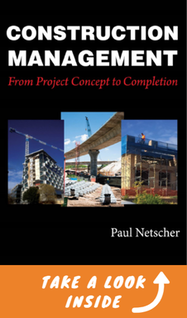 "Packed with invaluable tips, insights and advice, Construction Management from Project Concept to Completion is an easy to read project management book that explores the complete construction project lifecycle: from project inception, where the owner decides what they want, where they want it through project execution to completion. Ensure your project is a success." Procurement ManagementProcurement involves acquiring the materials and services required in construction projects to ensure completion. Ordering the correct quantity of construction materials Here are the steps involved in procurement management:
Procurement is a crucial phase in pre-construction as there will be instances when you need to purchase, rent, or acquire external resources to accomplish project goals. Before requesting external help, make sure that you have weighed the pros and cons of producing the goods or services from the team. Making an informed decision is crucial so that you can proceed with confidence. Ready for a successful construction projectAlthough construction will take time, patience, and money to complete, you can help guarantee the project's success by following these pre-planning guidelines. Beginning the building phase with an appropriate budget, accurate scheduling, and establishing a refined set of goals is critical for successful project completion. How clients accidentally sabotage construction projects, and how you can stop it AuthorChris Jackson is an experienced Business Development Manager with a demonstrated history of working in the construction industry. He is currently employed by Best Access Doors, an access door supplier in the US and Canada, and has been working for the company for more than 12 years now. His area of expertise is on Negotiation, Roofers, Sales, Project Estimation, and Facility Management (FM) Do you want to learn how to manage construction projects successfully"A practical and really helpful guide to navigating the myriad of things to think about when managing a construction project." Reader review on Amazon Paul Netscher has written several easy to read books for owners, contractors, construction managers, construction supervisors and foremen. They cover all aspects of construction management and are filled with tips and insights.
Visit to read more. The books are available in paper and ebook from most online stores including Amazon. Construction management refers to the process of managing building projects. It involves streamlining the various stages of development and ensuring that all workers, teams, and equipment are functional and collaborative. The need for structure and coordination paved the way for project managers to have a crucial role in the industry. "The construction manager must interact with various professionals from different skill" While project management primarily deals with managing resources, costs, and quality, the role of the project manager extends beyond leadership and control. While project management primarily deals with managing resources, costs, and quality, the role of the project manager extends beyond leadership and control. The manager must interact with various professionals from different skill areas, such as engineers, architects, designers, public works, and city planning. from different skill areas, such as engineers, architects, designers, public works, and city planning. the importance of good communication on projects Sectors of Construction To better understand project management, it would help identify the various construction industry sectors. Below are the four types of building projects:
Despite the type and scale of the project, you still need to implement construction management to ensure safety and mobility on-site. The Role of a Project ManagerProject managers are among the busiest people on construction sites since their tasks and responsibilities encompass the various stages of development. Their main goal is to proceed according to the finalized plan. They need to manage the entire project to ensure successful completion within the agreed budget and schedule. Here are some of the duties of a construction project manager:
Due to their level of authority and accountability, here are the skills that a project manager should have are:
"Construction management is a challenging task" Construction management is a challenging task that demands knowledge and expertise in various aspects of construction. However, their role is vital in the industry as any stage in the construction project can easily be in disarray if not managed correctly. What qualities does a good construction project manager require? Construction Management Bidding ProcessDepending on the number of contractors pricing the construction project, the construction bidding process can be long and challenging. However, most construction projects follow the design-bid-build process wherein the owner provides the blueprints or drawings and selects the contractor through a bidding or quotation process. The contractors would then offer their bid or price, including statement of work (SOW) details, cost estimation, payment terms, etc. The project owner may also issue either of these two types of bids:
Once the owner receives all the bids, they can choose the best offer by employing any of these effective selection methods:
Once the project owner chooses the best contractor for the job, they will review and sign the contract and determine the payment method. Why owners sometimes employ the wrong contractor Construction Project Management ProcessesProject management requires various skills and the ability to coordinate with diverse agencies and people to lead the construction project from concept to build successfully. It would help adhere to these essential construction management principles during every project phase.
Construction managers play a critical role on construction projectsProject managers play a significant role in the construction industry as they are responsible for maintaining the intended budget, ensuring productivity and quality, and creating a safe working environment. Although there could be multiple issues on the construction site, a professional project manager would have an effective risk management plan to implement and get the project back on track. Aside from risk management, continuous communication between all teams is also vital to successful completion. 10 Commandments for Construction Project Managers Do you want to learn how to manage construction projects successfully"I found that referring to this book was like having my own mentor on tap. Excellent." (Reader Amazon) Paul Netscher has written several easy to read books for owners, contractors, construction managers, construction supervisors and foremen. They cover all aspects of construction management and are filled with tips and insights. Visit to read more. The books are available in paper and ebook from most online stores including Amazon. AuthorChris Jackson is an experienced Business Development Manager with a demonstrated history of working in the construction industry. He is currently employed by Best Access Doors, an access door supplier in the US and Canada, and has been working for the company for more than 12 years now. His area of expertise is on Negotiation, Roofers, Sales, Project Estimation, and Facility Management (FM) Commercial buildings account for a large percentage of the overall carbon emissions in the world. Due to this alarming statistic, building or retrofitting structures in line with green initiatives and transitioning to a sustainable building method are logical solutions to reduce C02 emissions. "The purpose of green buildings is to reduce the occupants' reliance on artificial devices and maximize the use of the natural resources surrounding the structure." The purpose of green buildings is to reduce the occupants' reliance on artificial devices and maximize the use of the natural resources surrounding the structure. If you are interested in creating or renovating your existing building to become more sustainable, here are some vital considerations for green building design. Steps to making your building green1. Orientation of the Building Building orientation is the process of facing a structure in a certain way to maximize various aspects of its surroundings, such as the warmth of the sun, curb appeal, wind patterns, and drainage system. With rising energy costs, it is an effective passive technique to capitalize on natural energy while maintaining thermal comfort. Below are some tips to maximize natural heat gain through orientation:
For instances where kerb appeal and lot dimensions hinder your builder's ability to orient your space, you can still achieve efficiency by employing energy-saving features, insulation, and cool roofs. 2. Solar Shading Solar shading and control directly impact the efficiency of your commercial building. Also called daylighting, solar shading involves using specific technologies to combat glare and reduce heat gain without preventing natural light. The process reduces your reliance on artificial lighting and HVAC systems. In a nutshell, solar shading eliminates direct heat and sunlight to help keep a space cool and efficient. Here are the two types of solar shading to help you decide which method is best for your building:
In addition, by reducing heat gain, solar shades can help reduce the need for air conditioning systems. When used in conjunction with other passive methods such as night cooling, it also has the potential to eliminate your need for HVAC devices, depending on your location. 3. Choice of Building Material Choosing sustainable materials is also a practical option for green buildings. Material selection during construction is crucial to determine your building's impact on the environment. For instance, it would be best to choose locally sourced sustainable materials as it can also help minimize transportation costs and help the community. Here are some examples of recycled building materials:
Recycled materials can also help reduce landfills and the need for non-biodegradable products. A perfect example of recyclability is metal roofs since they primarily consist of recycled metal sheets. You can also choose a lighter roofing shade for your commercial roof to lower heat gain and install energy-efficient flat-panel skylights for natural illumination. 4. Building Envelope The building envelope is also a critical component in your commercial space as it divides the interior and exterior parts. The primary functions of building envelopes include security, shelter, solar and thermal control, moisture control, indoor air quality, and daylight access, to name a few. The builder can also build the envelope differently depending on the location. For instance, a loose envelope allows airflow throughout the building. Meanwhile, a tight envelope controls the in and out airflow of the structure. 5. Window-wall Ratio (WWR) The window-wall ratio is a crucial energy-saving design that can affect your building's energy consumption. The WWR refers to the portion of an exterior wall that consists of windows and is a significant value in determining a structure's energy performance. Since windows can cause twice the energy loss compared to a wall, they can impact your existing HVAC system. Therefore, the size and number of your windows should depend on the climatic conditions in your area. Aside from shading, you can purchase windows with superior glazing systems and lower heat gain to reduce heat and glare. 6. Structural Design The commercial building and construction industry is accountable for the largest raw materials consumed in various applications. Combined with the continuing growth of the population, it is necessary to find alternatives and solutions to reduce resource depletion. Here are some of the ways of material efficiency:
Proper management and usage of construction materials is a significant concern in every building project. It is crucial to employ effective techniques to ensure material efficiency and resource conservation. 7. Smart Lighting Lighting accounts for up to 20% of a building's total energy usage worldwide. Proper and adequate lighting affects occupant health, comfort, and productivity, so you need to implement efficient lighting solutions for your building. The best way to establish sustainability in your business is to allow as much natural light as possible. Daylighting helps reduce lighting costs, but it is also beneficial to your employees. If natural illumination is not enough, you can use CFL or LED lights to minimize consumption and heat pollution. 8. Water Conservation Water regulation and quality are some of the fundamental objectives of a green building. Please pay close attention to your plumbing system since it primarily deals with water distribution and disposal. Start by regularly maintaining the pipes and installing water-conserving fixtures to reduce water loss. You can also practice rainwater collection and use it for toilets and landscaping. Install an efficient drainage system and harvesting canisters to practice recycling water. 9. Energy Usage Although fossil fuels paved the way for generating electricity in homes and factories in the past, they are responsible for global warming due to the trapped heat. Thankfully, we have found alternative power sources such as solar heaters, solar panels, natural ventilation, and daylighting. By implementing an intelligent approach toward energy consumption, we can hopefully eliminate the need for fossil fuels. "reduce, reuse, and recycle" 10. Waste Management Responsible waste management involves strategically placing waste disposal boxes and garbage chutes. You can help reduce landfill waste by strictly implementing reduce, reuse, and recycle practices inside your commercial building. To achieve this, you need proper planning to dedicate certain areas inside the facility for waste management. Segregate waste and employ effective wastewater collection systems that will go hand in hand with your plumbing lines. Good green building design will save moneyGreen buildings are the key to reducing the energy and emissions rate of the construction industry. The term refers to the zero-impact construction of commercial and residential structures, which involves using sustainable materials and improved efficiency. Ultimately, the application of efficient practices is highly beneficial for your business. You stand to gain reduced operational and power costs, shorter investment returns, and increased asset value as more people choose to become sustainable. Creating healthy spaces for your employees or occupants is undeniably crucial to the success of your commercial structure. AuthorChris Jackson is an experienced Business Development Manager with a demonstrated history of working in the construction industry. He is currently employed by Best Access Doors, an access door supplier in the US and Canada, and has been working for the company for more than 12 years now. His area of expertise is on Negotiation, Roofers, Sales, Project Estimation, and Facility Management (FM)
A terrible war is raging in Ukraine killing innocent people. Two very different leaders face-off. Much has been said comparing them. Are there lessons that could make you a better construction manager? While I don't want to trivialise a tragic war, I believe that we can all learn from every situation. We should be learning from mistakes as well as successes. We can learn from good leaders as well as bad leaders. Why repeat the mistakes of others? Why not learn from good leaders - but even good leaders sometimes make mistakes. "I always said to those that worked with me that I wanted them to be better than me. They should learn from my mistakes and not repeat them." I always said to those that worked with me that I wanted them to be better than me. They should learn from my mistakes and not repeat them. They should learn from my good traits and replicate them better. If they were not better than me then I had failed. Lessons for construction project managers
"When people are too scared to report a problem they will hide the issue"
"Break your word or commitment once and you’ve lost trust. It’s hard to win back trust."
"Many problems occur in construction due to poor or inadequate planning."
"None of us are perfect - be prepared to change"
"The biggest or strongest team does not guarantee a successful project."
"You cannot hide problems forever"
Your winning should never be at the expense of other people.War is a terrible thing. People who had homes, families, jobs, lives, lose everything overnight. Why? Does the end justify the means? “When the elephants fight, the grass gets trampled.” In Africa there is a saying: “When the elephants fight, the grass gets trampled.” Often the fight doesn’t achieve much, maybe wounded pride for one elephant, but the grass gets trampled and dies. It's the ordinary people who suffer. To be a good leader you don’t have to be a bully. Aim to make people’s lives better. Everyone. "Consider the consequences of your actions. Will they be worth it?" You should aim to avoid costly and lengthy disputes. Often disputes end with no winners. Always try and negotiate in an open and honest manner with no hidden agendas, or changing goals. It’s important to understand the other party’s restraints and their bottom-line. It’s pointless chasing something (say a monetary amount) which the other party does not have or can’t concede. When all else fails call in an independent mediator, or follow the dispute resolution process. Avoiding disputes on your construction project. Consider the consequences of your actions. Will they be worth it? What will be gained? What will the costs be? The costs of a dispute often far outweigh the end result. "What legacy will you leave? A respected leader or a despised leader? A leader in it for yourself only or a team player?" What legacy will you leave? A respected construction professional who delivered successful construction projects with minimal fuss and problems? Someone that stood up for their team? Someone that delivered projects where everyone was a winner? Someone that is respected? Will you be a leader that sat behind a desk, or a leader who worked with their team? Let’s not destroy people, companies, or the environment. Your winning should never be at the expense of other people. The 10 P’s of successful construction project management History will judge a bad leader harshly. #constructionmanagement #constructionprojectmanagement #contractors Do you want to learn how to manage construction projects successfully"I found that referring to this book was like having my own mentor on tap. Excellent." (Reader Amazon) Paul Netscher has written several easy to read books for owners, contractors, construction managers, construction supervisors and foremen. They cover all aspects of construction management and are filled with tips and insights.
Visit to read more. The books are available in paper and ebook from most online stores including Amazon. "I just want to say thank you for giving back. Personally, the webinar was an eye opener and moved me to reflect on my day-today decisions at work and off-work and how ethical I am." Participant at webinar Ethics in construction. What are unethical behaviours in construction? (Spoiler alert - producing poor quality work is unethical.) Why are good ethics important? Are there excuses for unethical behaviour? What should not be considered unethical practices? Join Anil and I in this webinar where we discuss these questions. Let's work together to improve the construction industry. #constructionmanagement #constructionethics #constructionprofessionals #constructionprojectmanagement #constructionindustry https://youtu.be/tBuTZmMZ2vs "Was a very informative CPD and I did not even realise that so many aspects could be considered unethical. Thank you." Webinar participant Do you want to learn how to manage construction projects successfully"This book helps with practical tips learned from real experiences. A must read book for the people who are involved in construction projects, especially project managers." (Reader - Amazon.com) Paul Netscher has written several easy to read books for owners, contractors, construction managers, construction supervisors and foremen. They cover all aspects of construction management and are filled with tips and insights.
Visit to read more. The books are available in paper and ebook from most online stores including Amazon. In our previous article Is your construction schedule achievable? we discussed how many construction projects are completed late. This is often because contractors commit to an unachievable completion date. This is costly for both client and contractor. In the article we also discussed how sometimes contractors can work with clients to deliver critical components of the project to the client on time, while completing the rest of the project later. Sometimes however project dates are immovable and contractors must throw in extra resources or come up with innovative construction methods and solutions. In this article we discuss some methods to shorten construction time. #constructionschedule #constructionprogramme #constructionprogram "It is often possible to reduce construction time using innovative construction methods and techniques, together with good planning and scheduling." Case study: We had to construct a concrete cooling tower structure as can be seen in the above photos. To speed up construction while we were constructing the box structure we constructed the 2 concrete flues on the ground. The client had a 300 ton crane on the project which we were able to use to lift the completed flues onto the top of the box structure. This saved about 3 to 4 weeks of construction time. Reducing Construction TimeIt is possible to reduce construction time by:
But reducing construction time sometimes comes at a price But reducing construction time sometimes comes at a price
There is a point when you cannot achieve the impossibleThere is a point when you cannot achieve the impossible.
#constructionmanagement #constructionprojectmanagement #constructiondelays Have you committed to a construction schedule that was impossible? What were the consequences? Other useful articles the importance of good communication on projects Is your construction project stressing you out? 12 steps to reduce the stress of construction © 2022 This article is not to be reproduced for commercial purposes without written permission from the author. Do you want to learn how to manage construction projects successfully"This book helps with practical tips learned from real experiences. A must read book for the people who are involved in construction projects, especially project managers." Reader on Amazon Paul Netscher has written several easy to read books for owners, contractors, construction managers, construction supervisors and foremen. They cover all aspects of construction management and are filled with tips and insights.
Visit to read more. The books are available in paper and ebook from most online stores including Amazon. Unfortunately many construction projects are completed late. We discussed many of the reasons for this in our article Will your construction project be completed on schedule? Read this. One of the reasons mentioned in the article is that some construction schedules or programmes are simply not feasible. Why are some construction schedules not feasible. Well it's sometimes because there is faulty logic in the schedule, or there are mistakes in the construction schedule and we discussed many of these problems in our articles Mistakes that impact construction schedules/programmes and Mistakes that impact schedules/programmes part 2. But often construction schedules or construction programmes (programs) are faulty simply because the contractor was overly optimistic and expected to complete construction tasks quicker than it was practical or possible with the allocated resources because the productivities of people and machines was lower than the contractor expected or allowed. "Many contractors make their construction schedule fit the client's requirements, even when these are unachievable. This is suicide." Unfortunately many contractors also make the construction schedule fit the duration the client wants - even when the clients expectations are unachievable. They somehow hope that it will all work out and by some miracle they'll get the project completed. Perhaps even that there will be changes and delays which they can claim which will let them off the hook. Regrettably this usually isn't the case and the project is completed late. #constructionschedule #constructionprogramme #constructionprogram Problems with construction schedules which are unachievableContractors often fit construction schedules to their Client’s dates even when these can’t be met. Project Managers are reluctant to say no to their Client, and Client’s do not want to hear that their project cannot be delivered when they want it. "Clients are surprised, disappointed, and incur additional costs" This results in: The Client being surprised when the project is completed late. Consequently:
The Contractor finishes late
The construction team takes shortcuts which jeopardize quality and safety. A demoralized construction team. A poor outcome for everyone. Perhaps an outcome which should have been avoided if the contractor had been honest and upfront with the client and explained to the client that the project duration was unachievable. "Some clients don't like hearing their project date is unachievable, but then they must find another contractor and both can suffer the consequences." Of course some clients don't like hearing that their project end date is unachievable. It may be reason for another contractor to be given the project and you lose out. But, are you really losing? You will lose more by committing to completion dates which are unachievable. There's the cost to your reputation. Additional costs of penalties. Plus the stress to you and your team. Good luck to the other contractor, because their win will be their loss, and your loss is probably your win. Working with the client to deliver their construction projectRather than promise the client something you cannot deliver it may be possible to work around the Client’s requirements.
"A good client will appreciate your honesty. Who wants to work for an unreasonable client?" If this is not possible you have to explain why their end date is unachievable. Explain everything you've considered to try and complete the project on time. A good client will appreciate your honesty. Who wants to work for an unreasonable client? Shortening the construction scheduleSometimes with innovation and extra effort it is possible to shorten the project construction duration. But this often comes with additional costs and risks. We discuss this topic in our next article. The important thing is do not promise something you cannot deliver – there will be disappointment, and there will be consequences. #constructionmanagement #constructionprojectmanagement #constructiondelays Other useful articles labour productivity on construction sites Why is there poor productivity on your construction project? planning your construction project © 2021 This article is not to be reproduced for commercial purposes without written permission from the author. Do you want to learn how to manage construction projects successfully"I have what I consider some of the best books on construction management." Reader Amazon Paul Netscher has written several easy to read books for owners, contractors, construction managers, construction supervisors and foremen. They cover all aspects of construction management and are filled with tips and insights.
Visit to read more. The books are available in paper and ebook from most online stores including Amazon. |
Archives
June 2024
Note: We welcome genuine comments, especially comments that add additional information to the subject matter in the article. We however reserve the right to remove inappropriate comments, which includes comments that have nothing to do with the subject, comments that include inappropriate language, and comments that are an advertisement for a product or company, or which include an advertising link. Comments must be in English. We will not enter into discussion on why a particular comment was removed.
CategoriesCopyright 2016 - The attached articles cannot be reproduced for commercial purposes without the consent of the author.
The opinions expressed in the attached articles are those of the writer. It should be noted that projects are varied and different laws and restrictions apply which depend on the location of the contractor and the project. It's important that the reader uses the supplied information taking cognisance of their particular circumstances. The writer assumes no responsibility or liability for any loss of any kind arising from the reader using the information or advice contained herein. "I have what I consider some of the best books on construction management."
Books are available from: Amazon.com Amazon.co.uk takealot.com kalahari.com Amazon.in Amazon.de Amazon.fr Amazon.it Amazon.com.au Powell's Fishpond uread bokus Amazon.ca Amazon.es Other retail stores Available in paperback or on Kindle "28 YEARS OF CONSTRUCTION PROJECT MANAGEMENT EXPERIENCE, DEVELOPING SUCCESSFUL CONSTRUCTION PROJECT MANAGERS AND BUILDING SUCCESSFUL CONSTRUCTION COMPANIES"
|




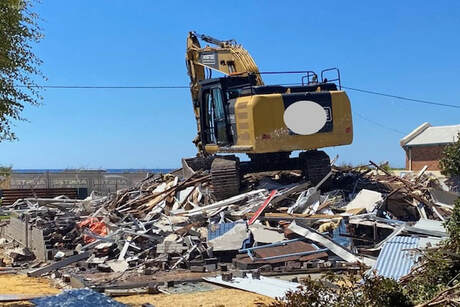
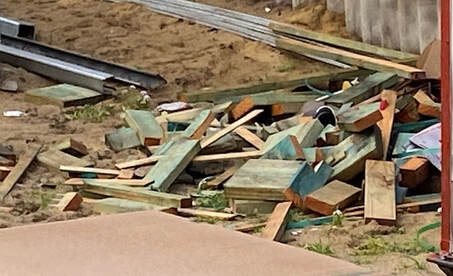
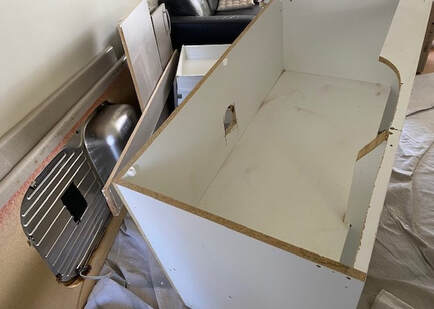
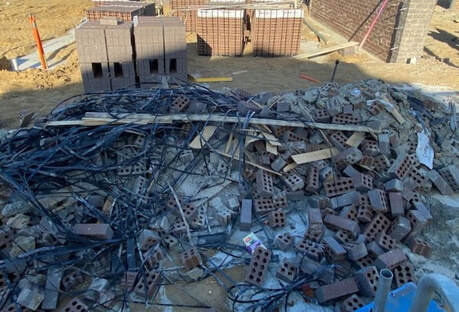
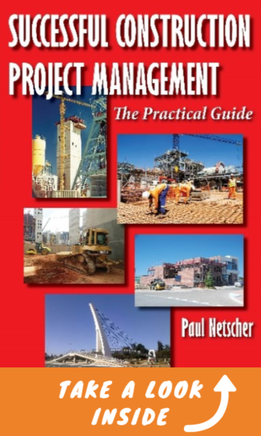
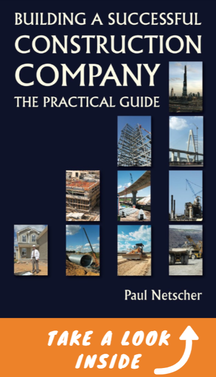
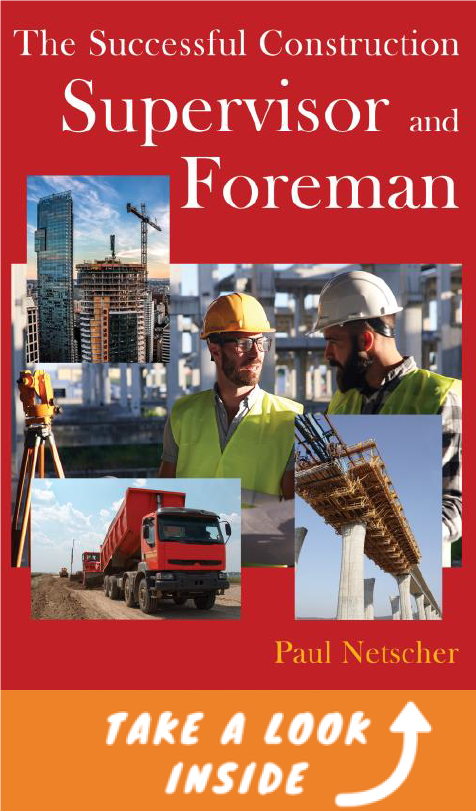
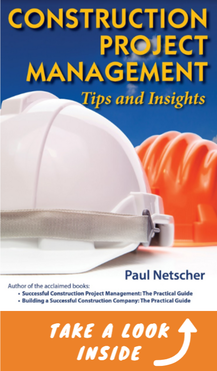
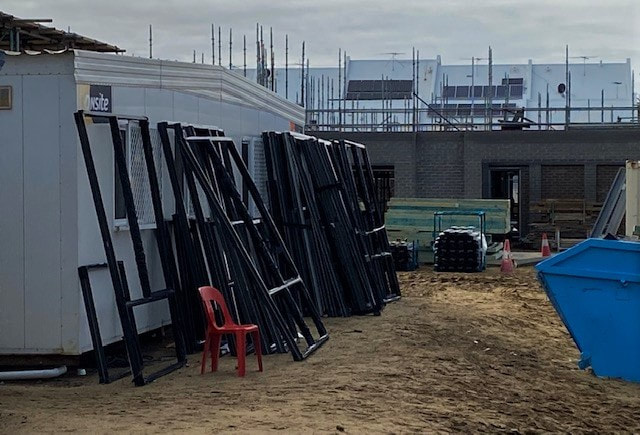
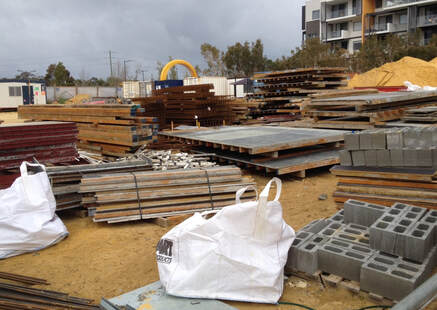
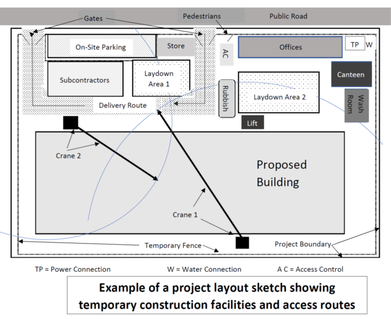

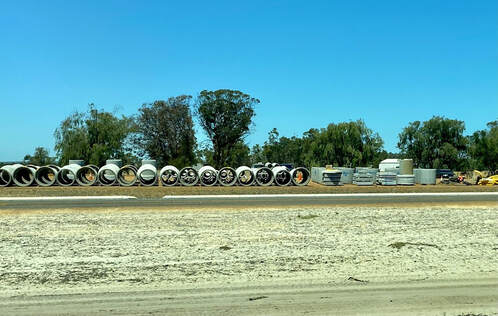
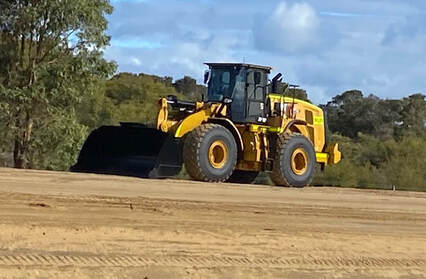
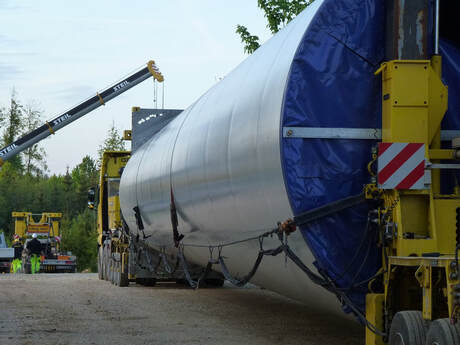

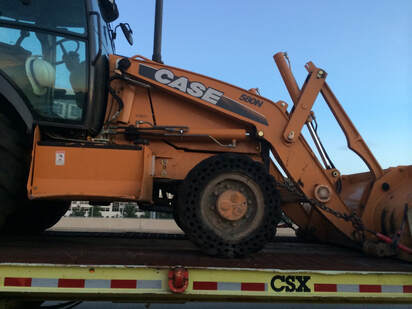
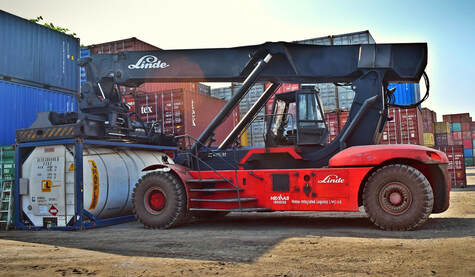
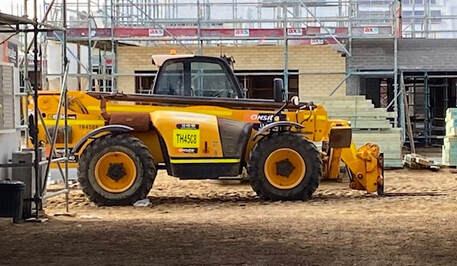
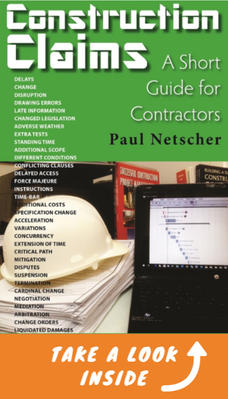
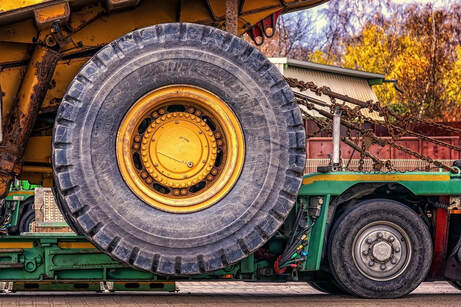
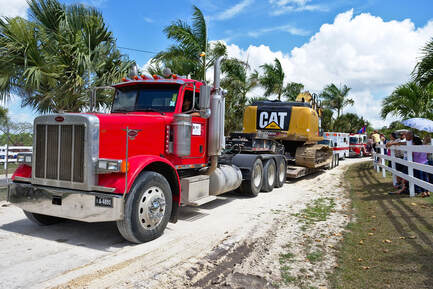
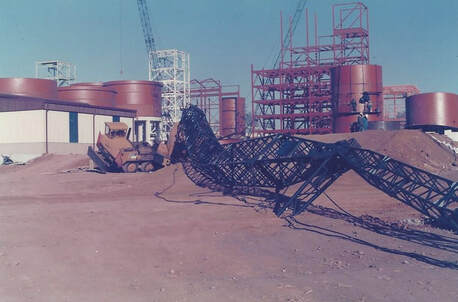
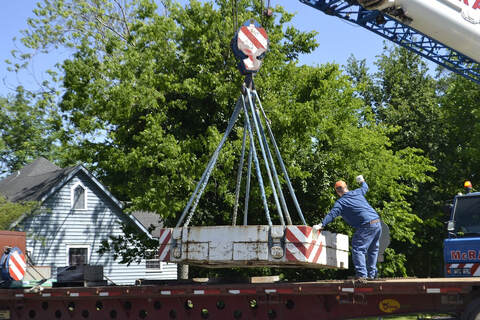

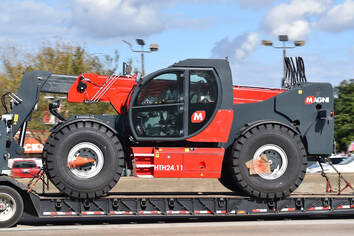
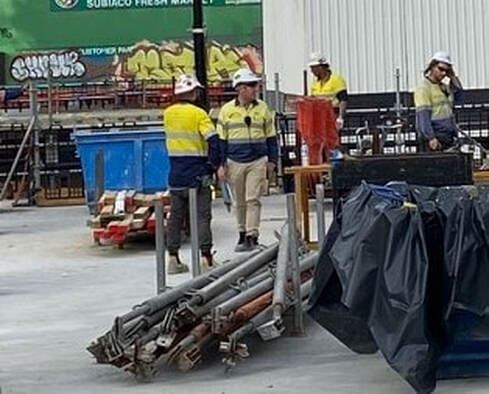

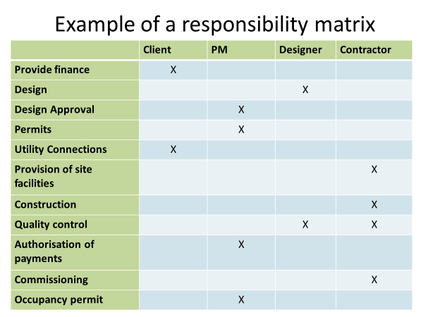

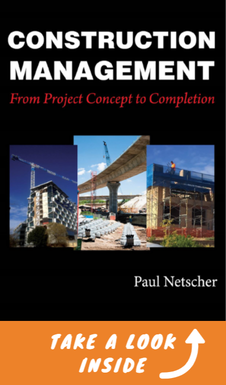
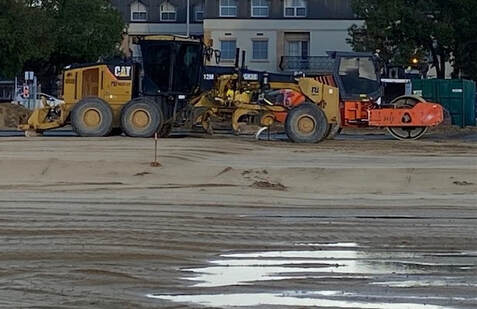
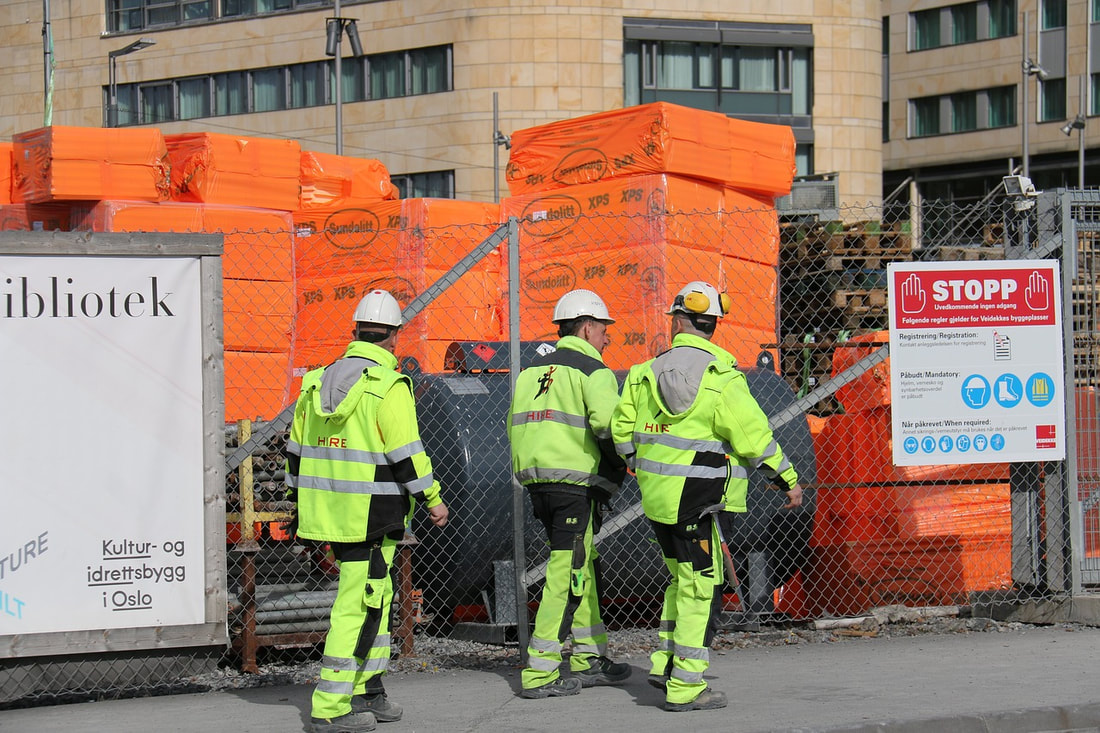

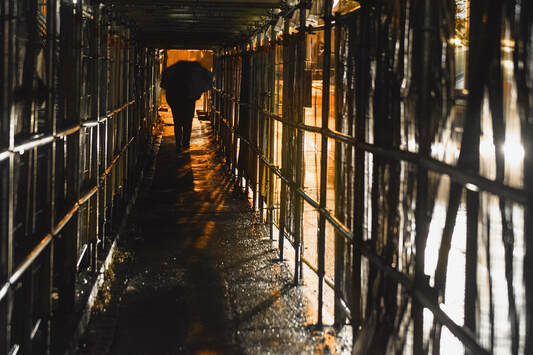
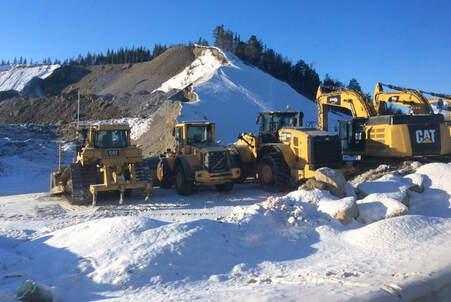


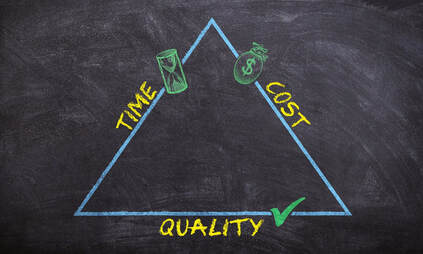

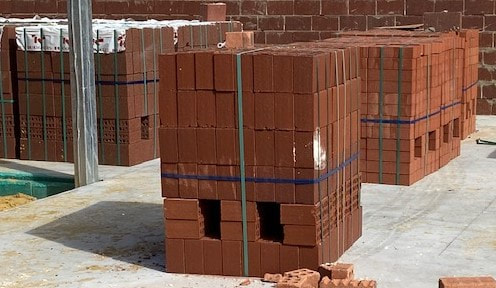
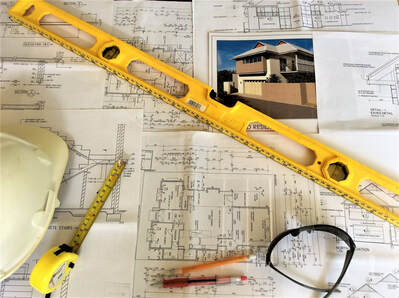
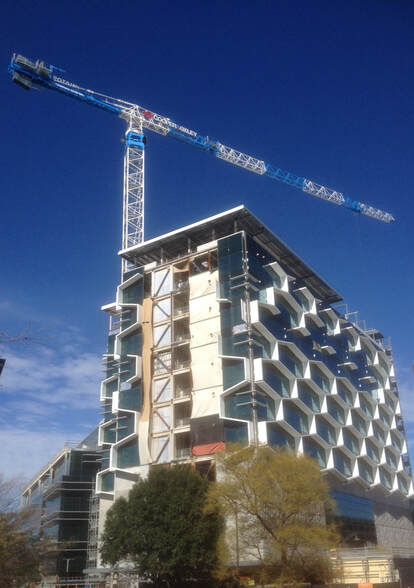
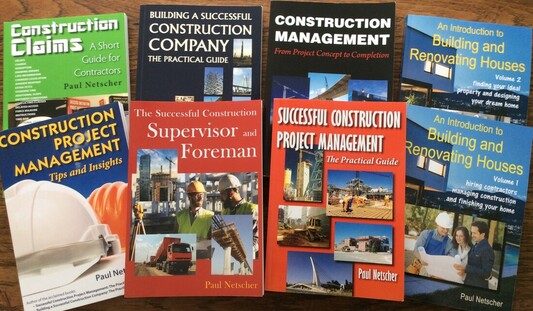
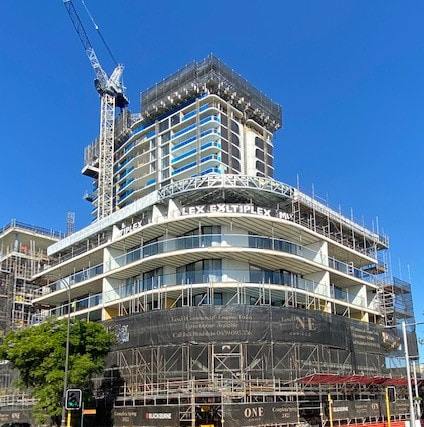
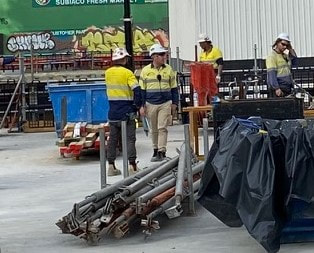
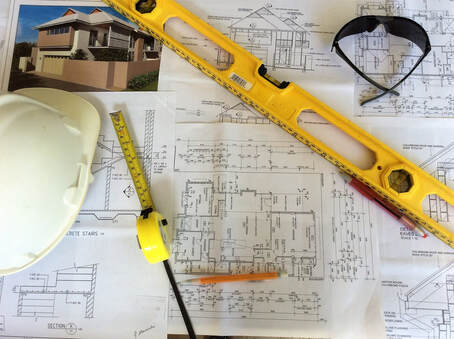
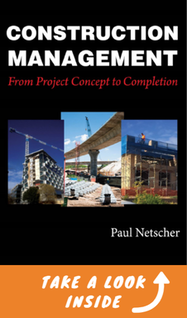
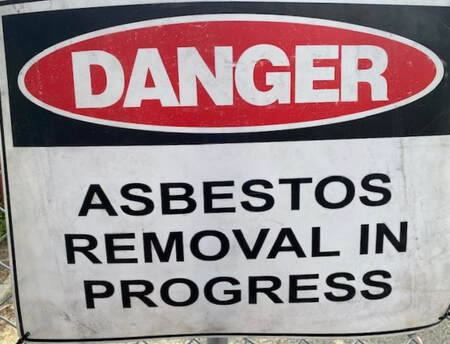

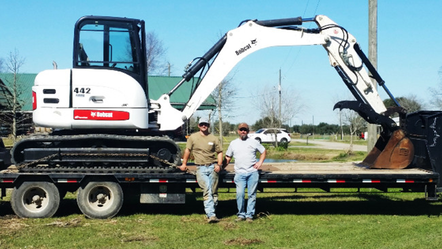


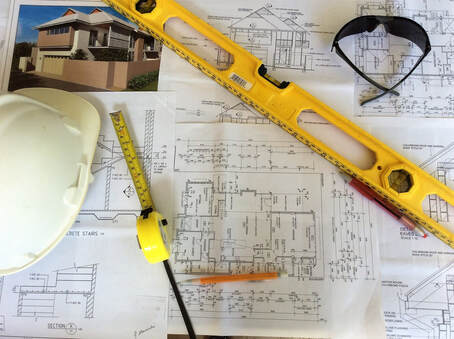
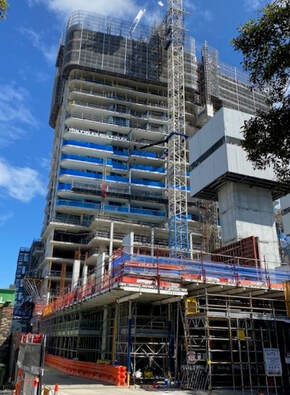


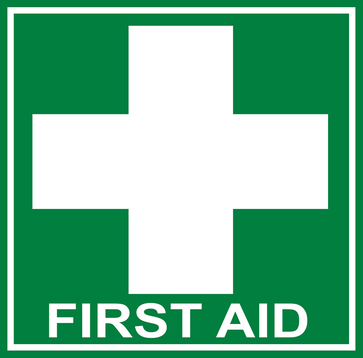



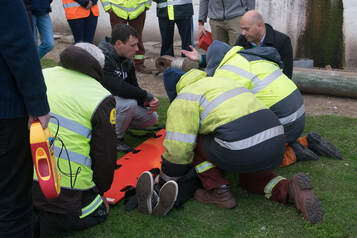
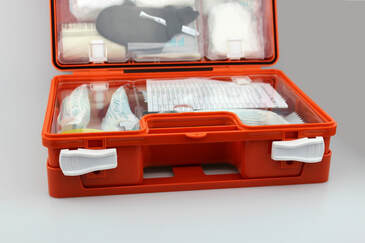

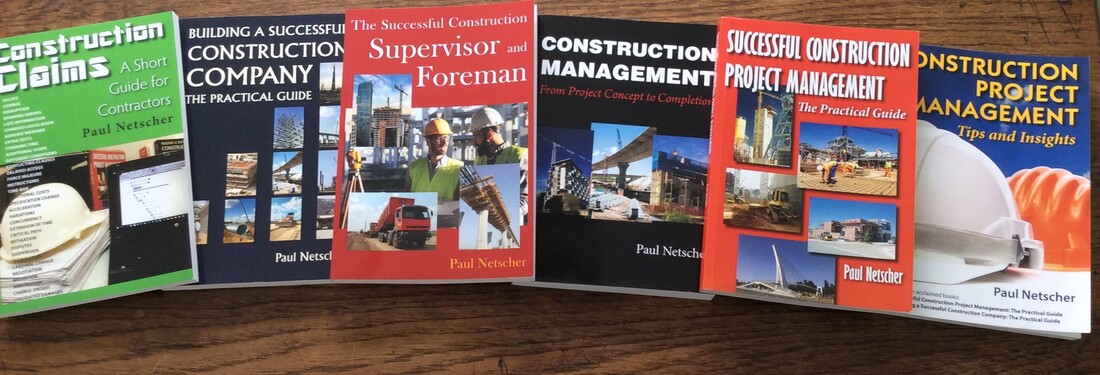

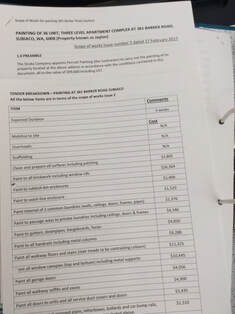








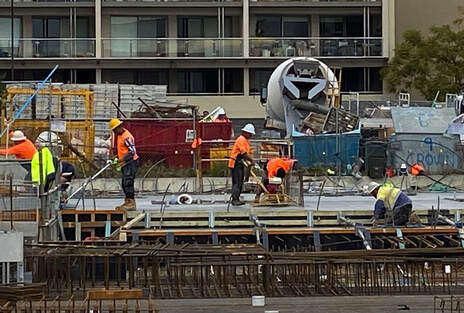
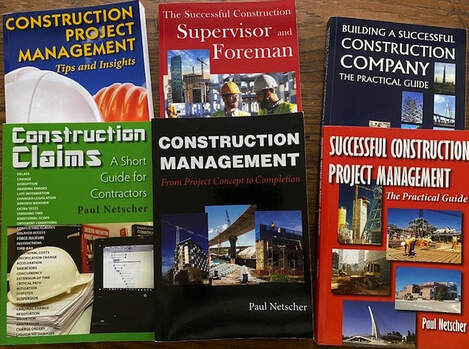

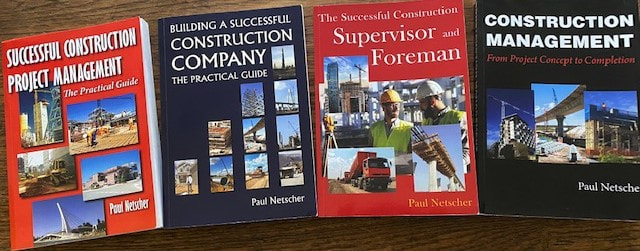



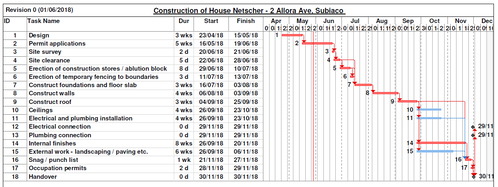
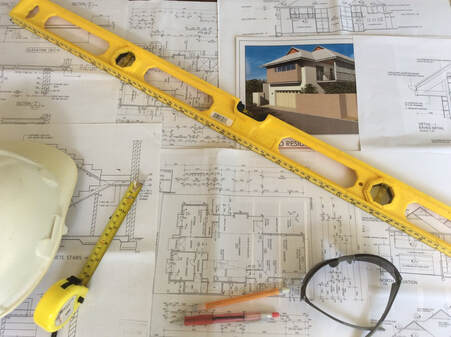

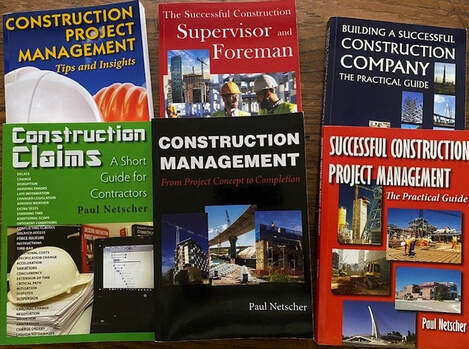


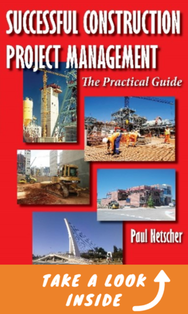
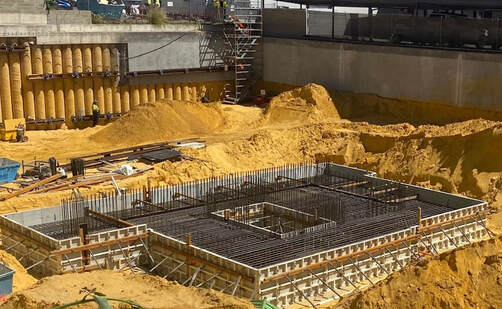



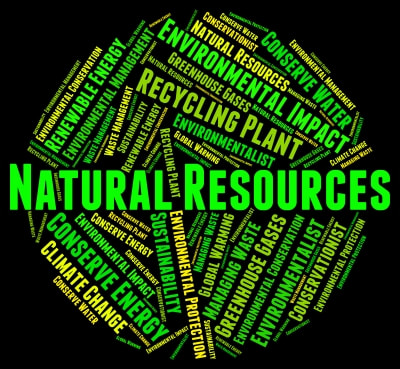


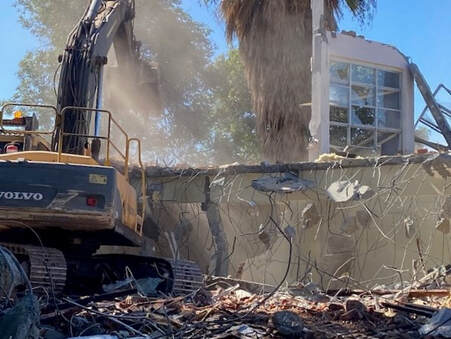



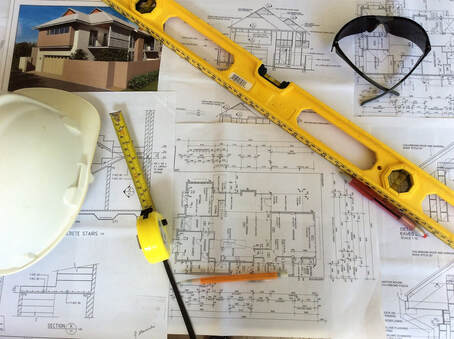
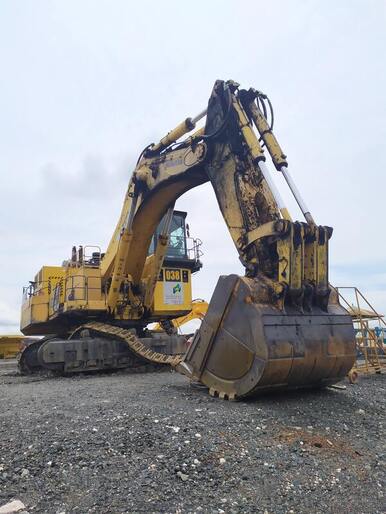
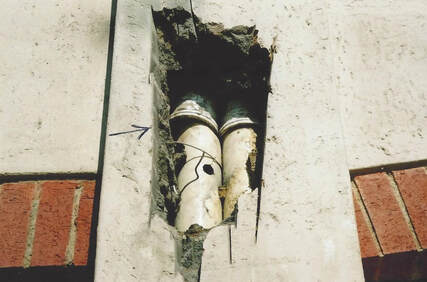


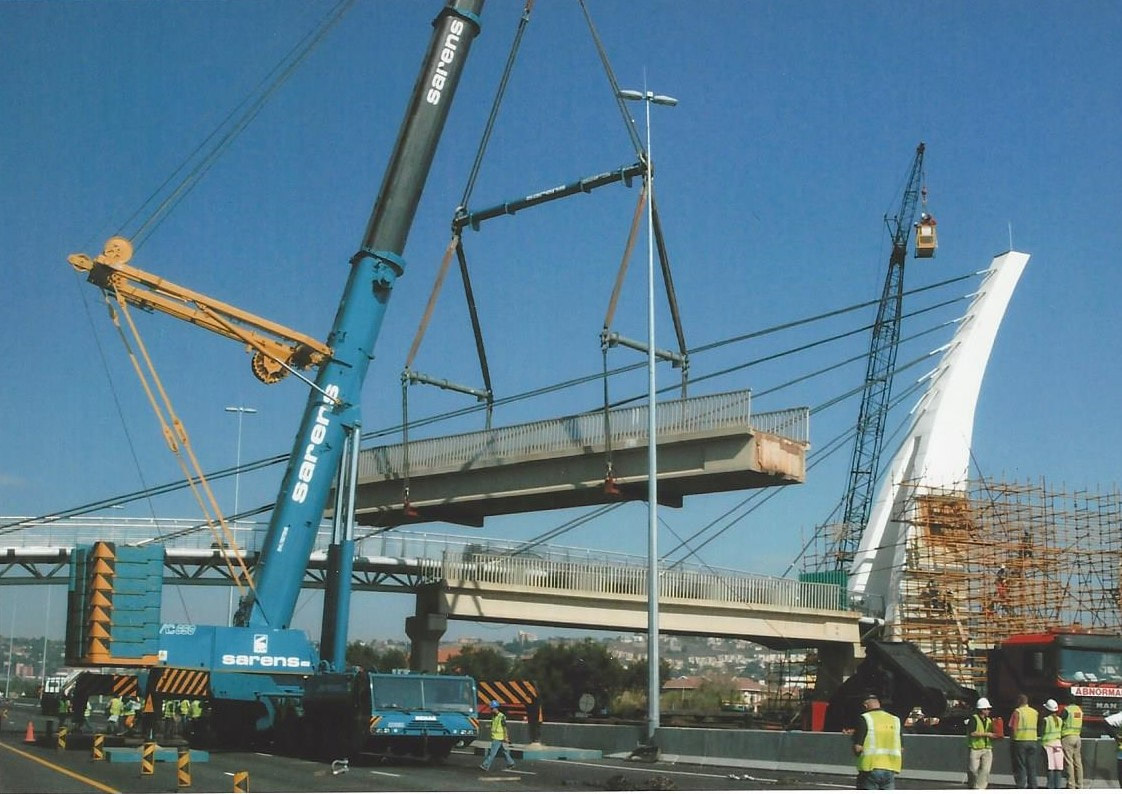
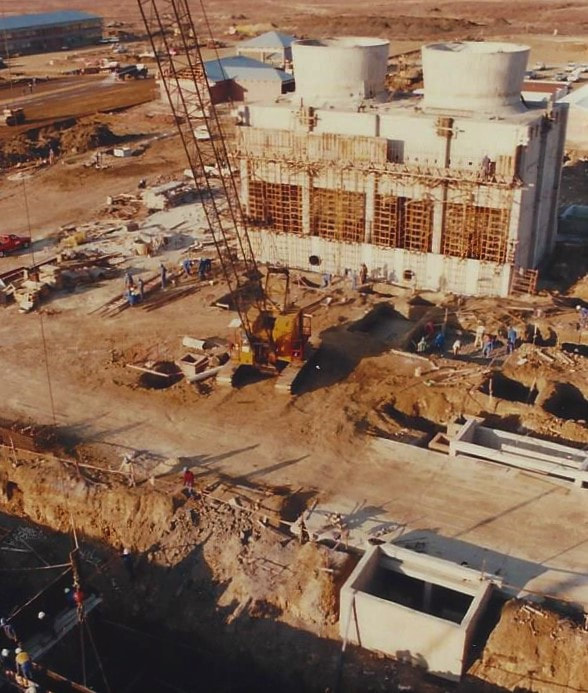
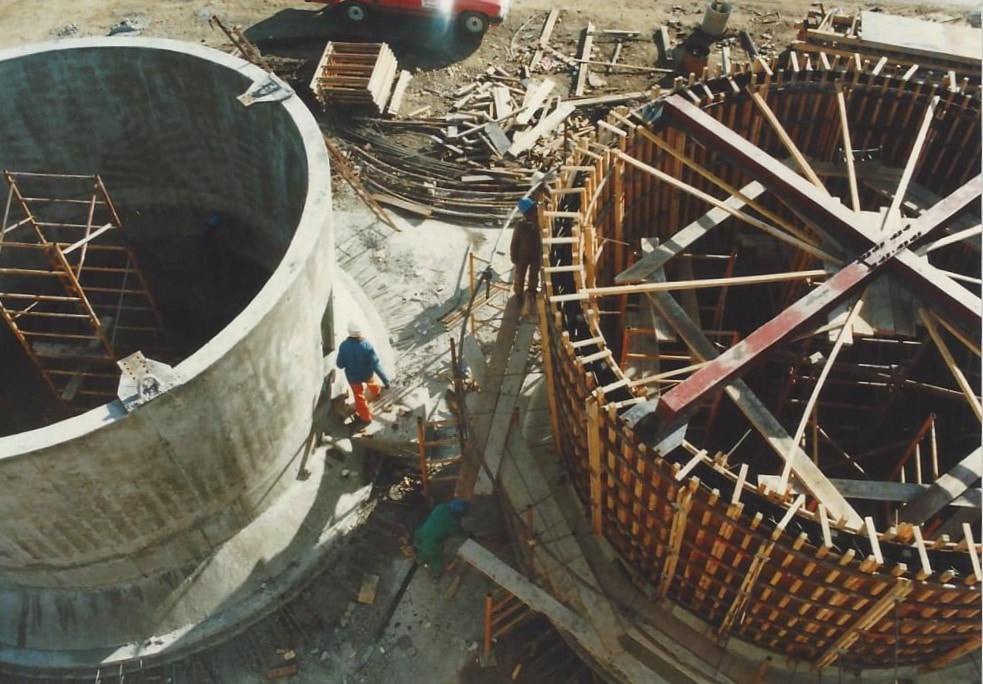
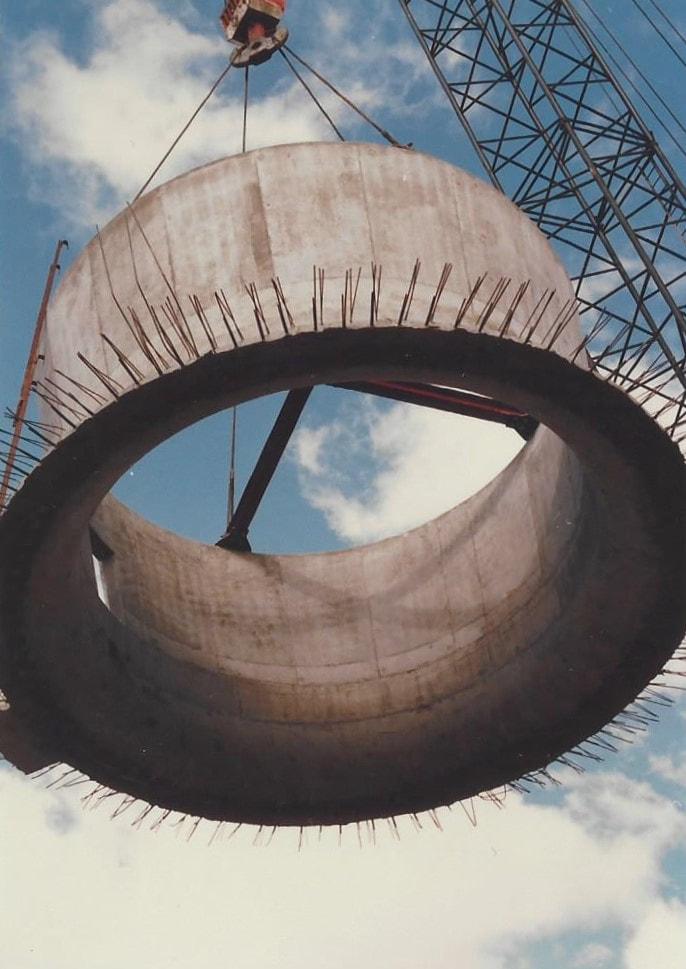
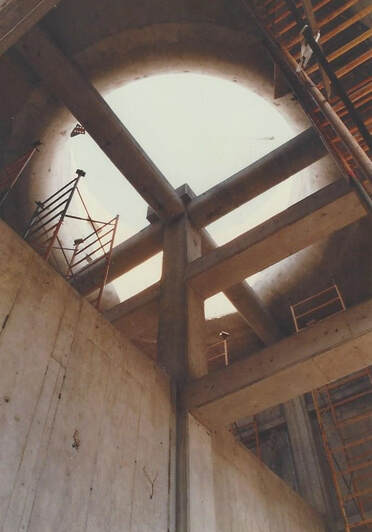

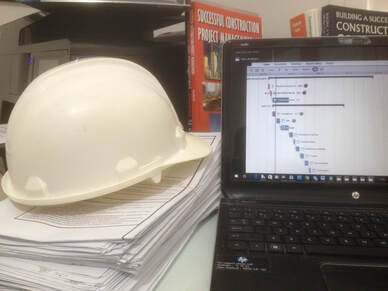
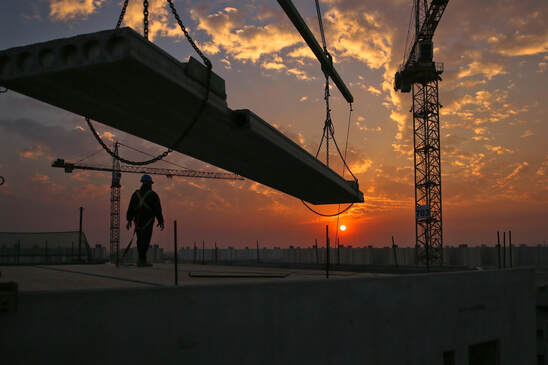


 RSS Feed
RSS Feed




